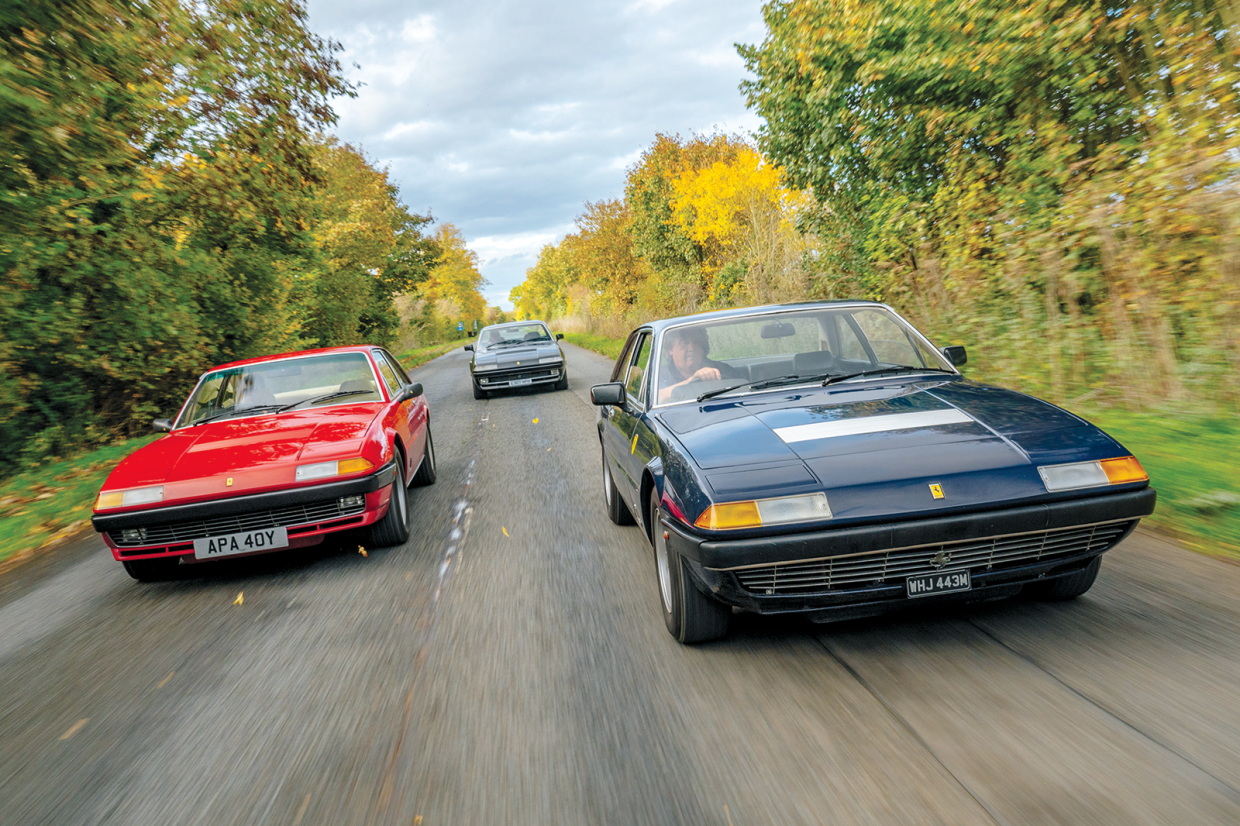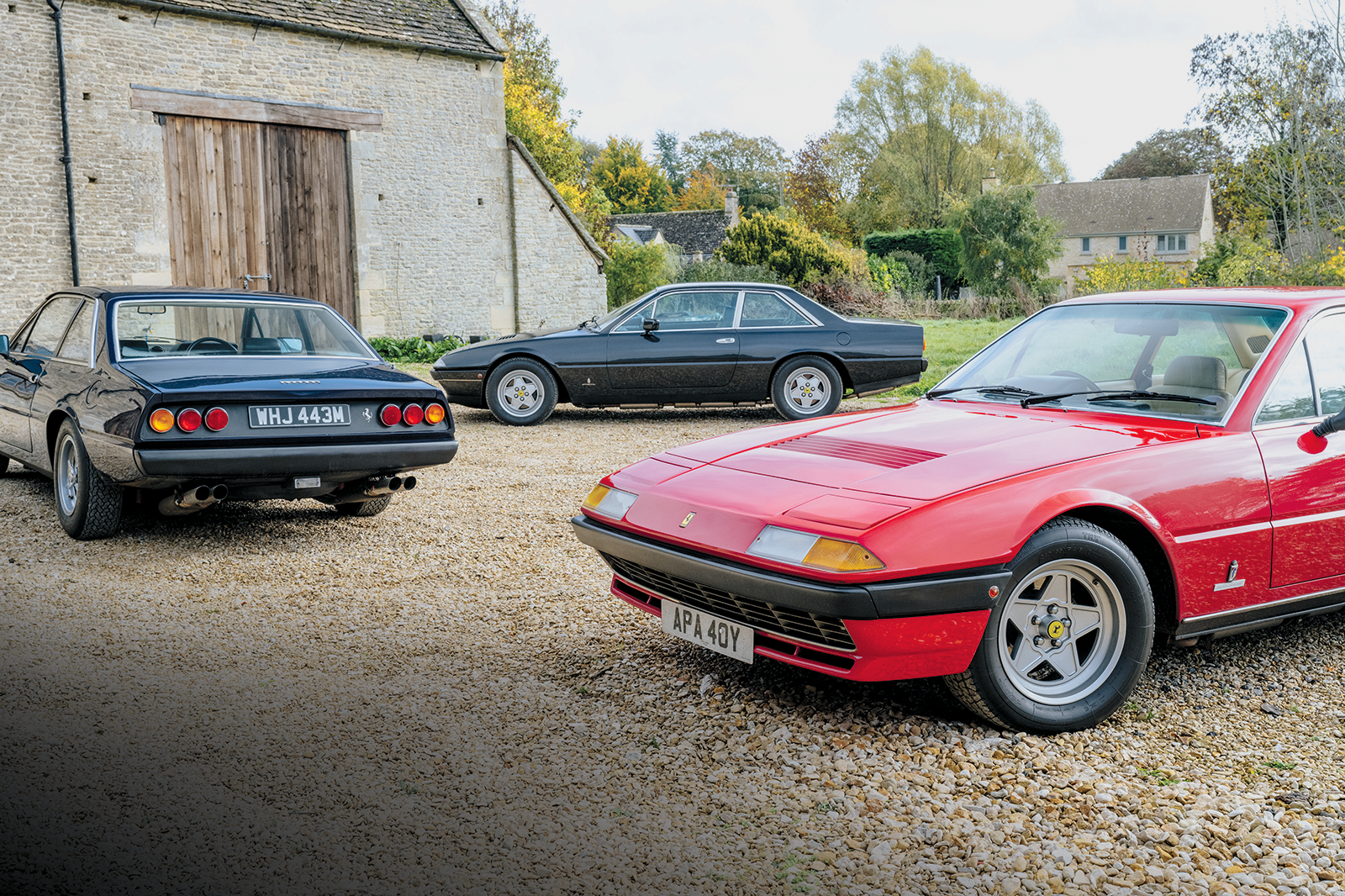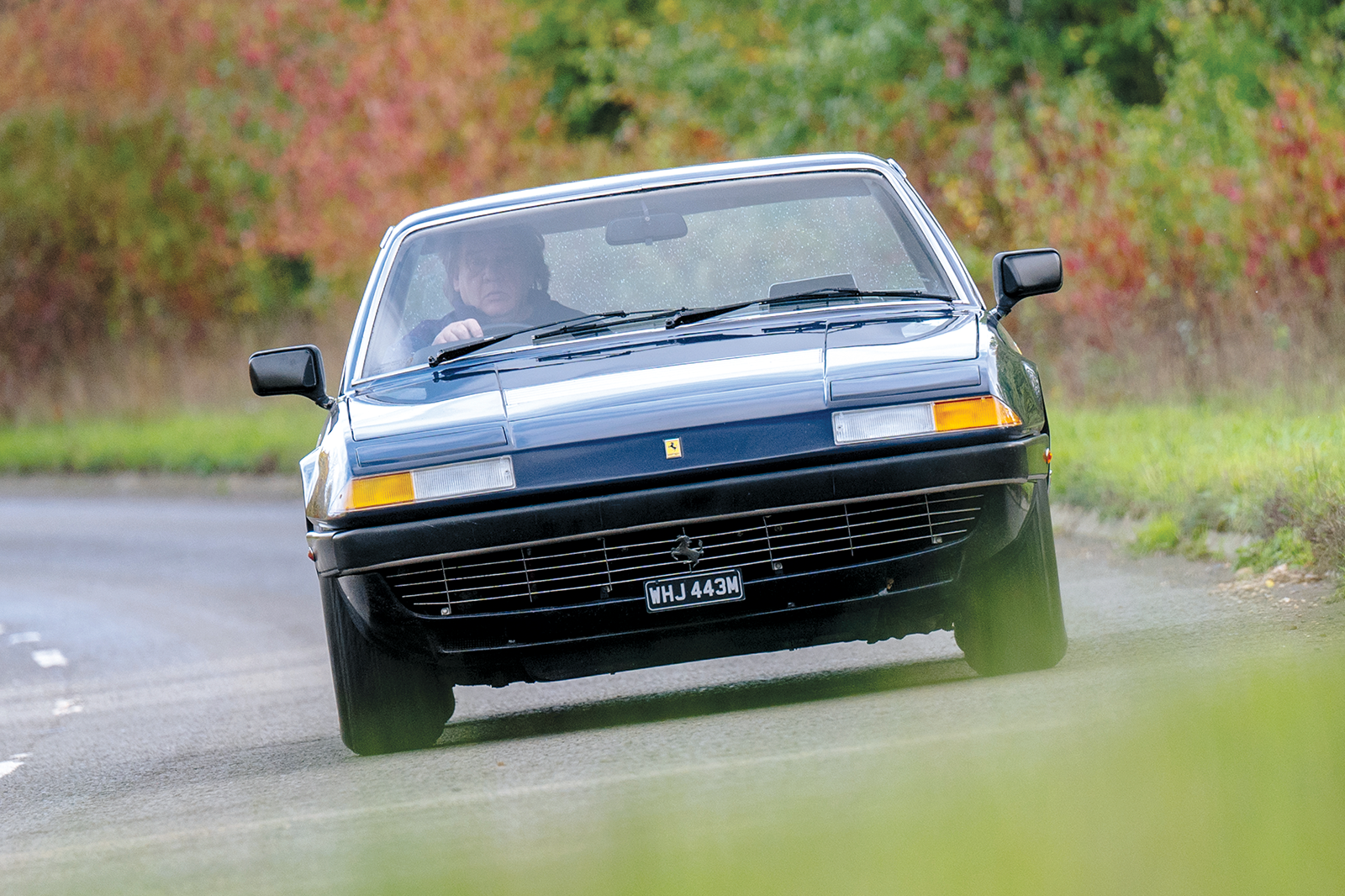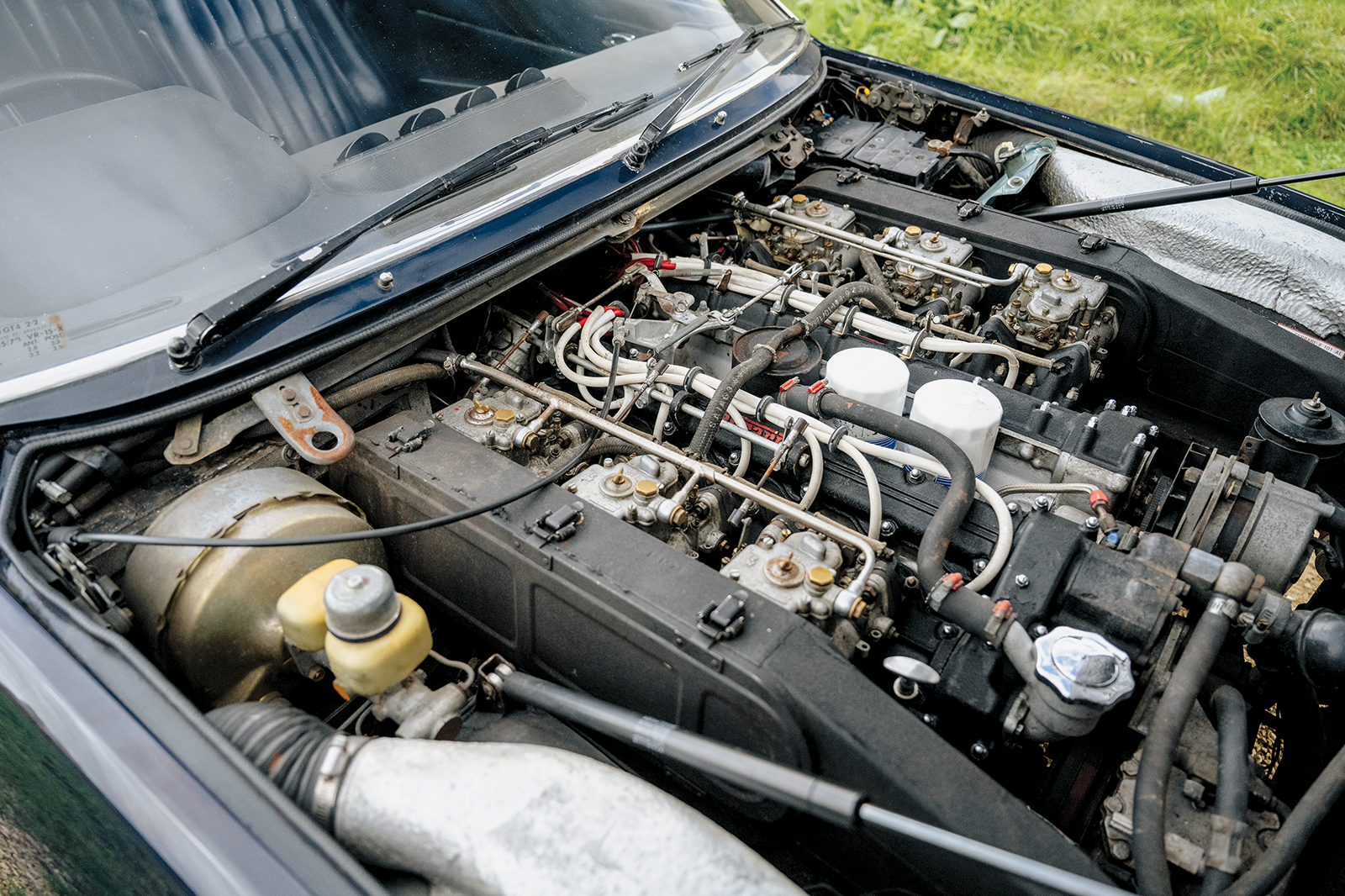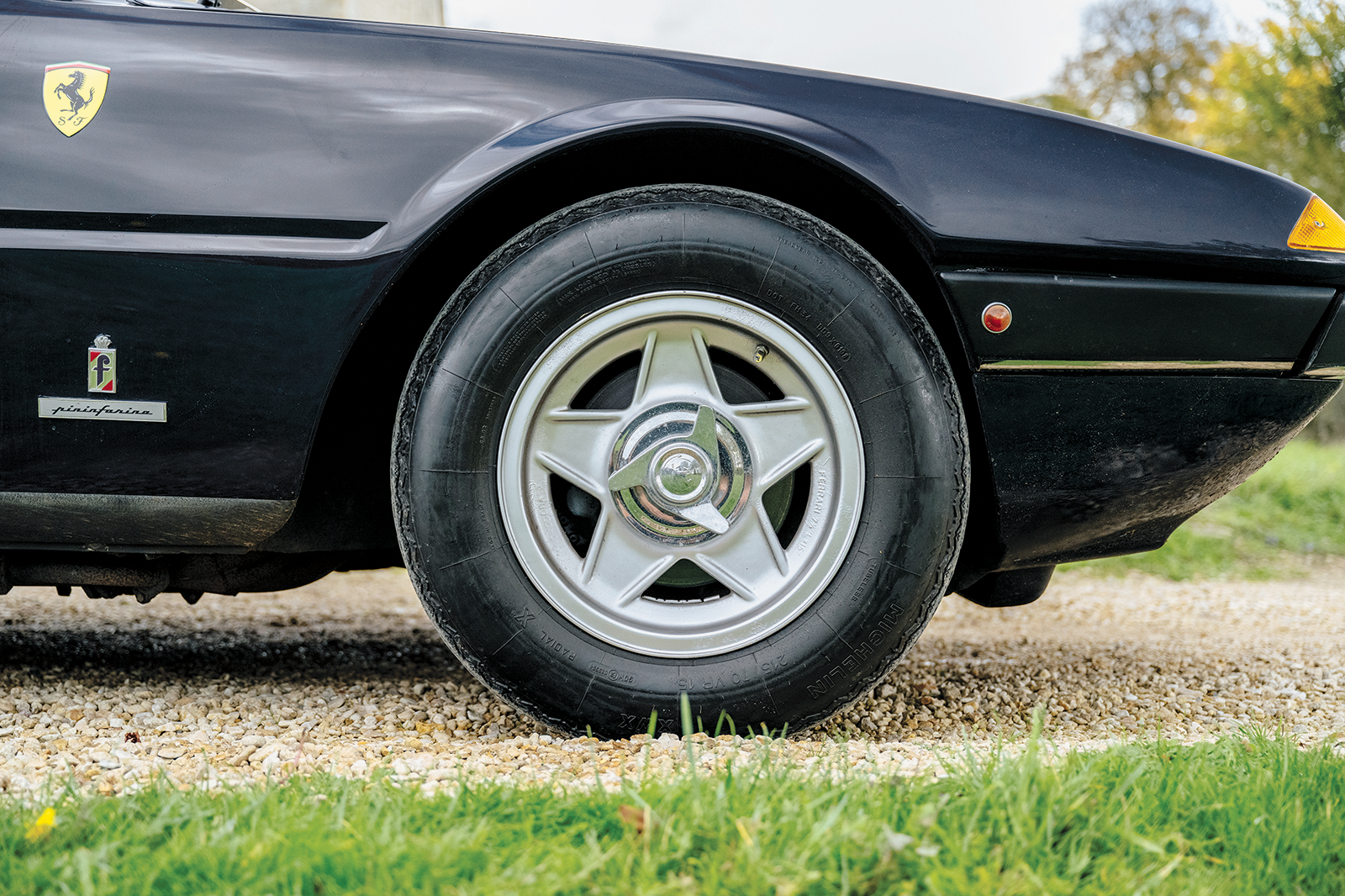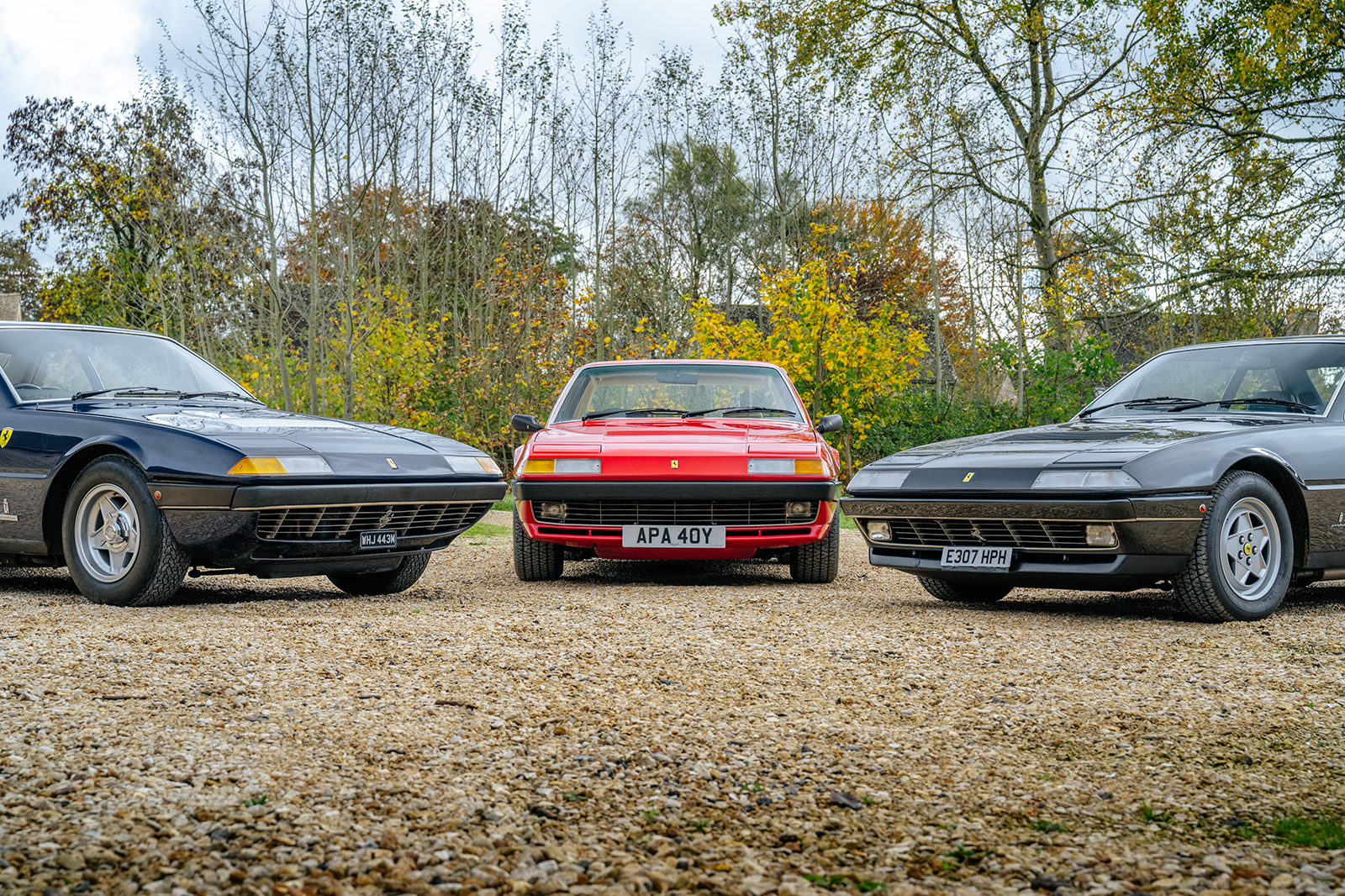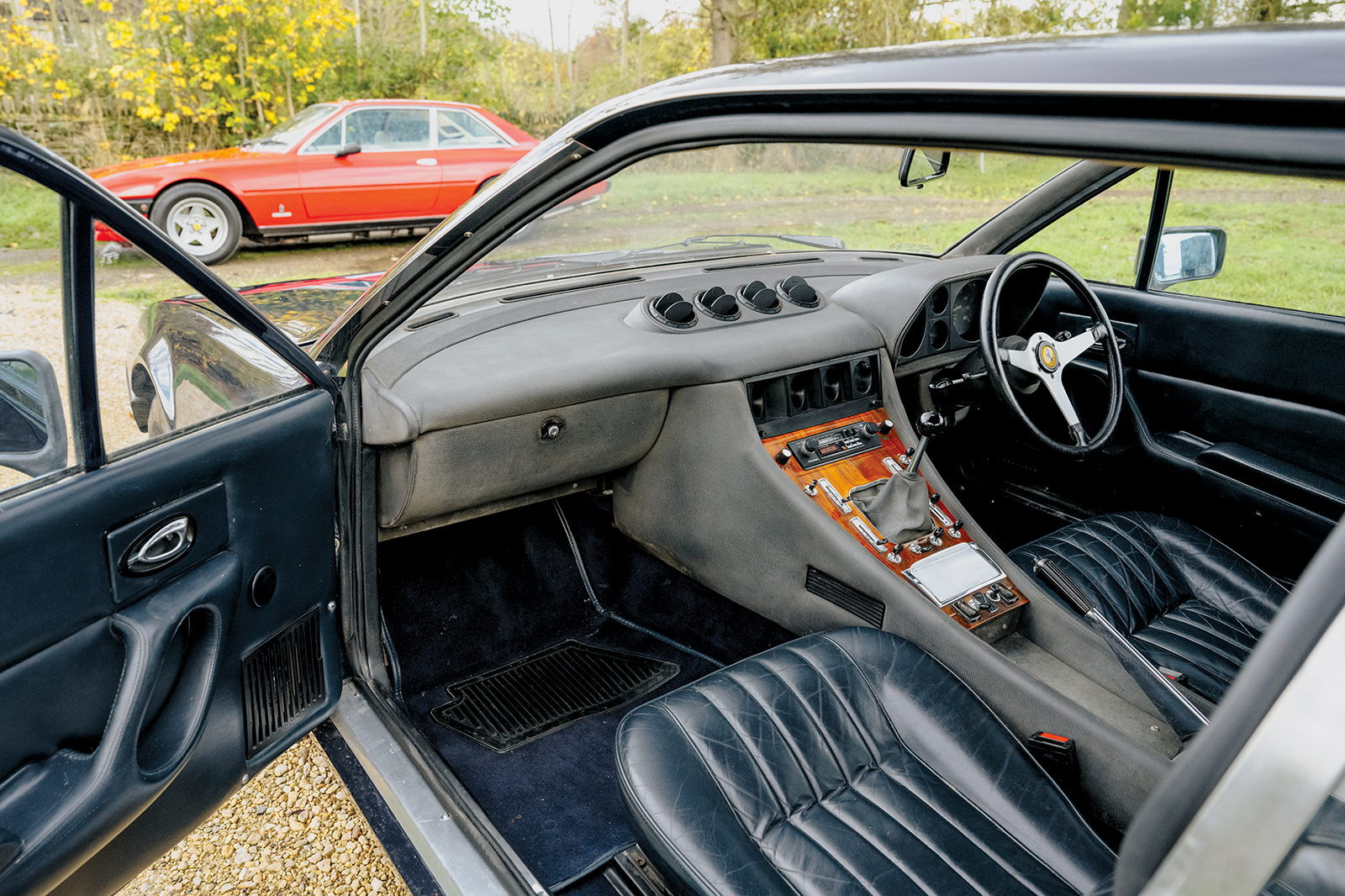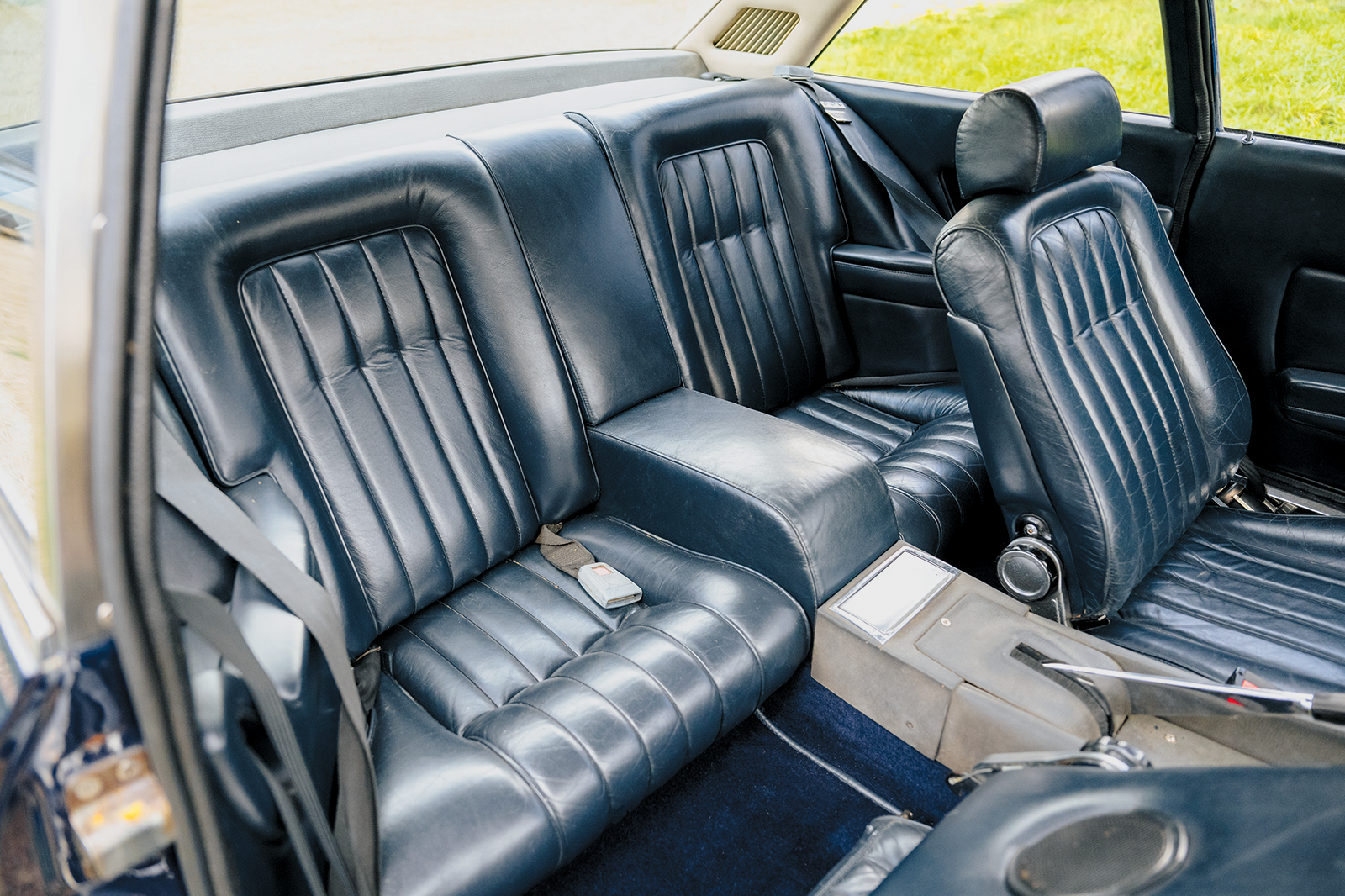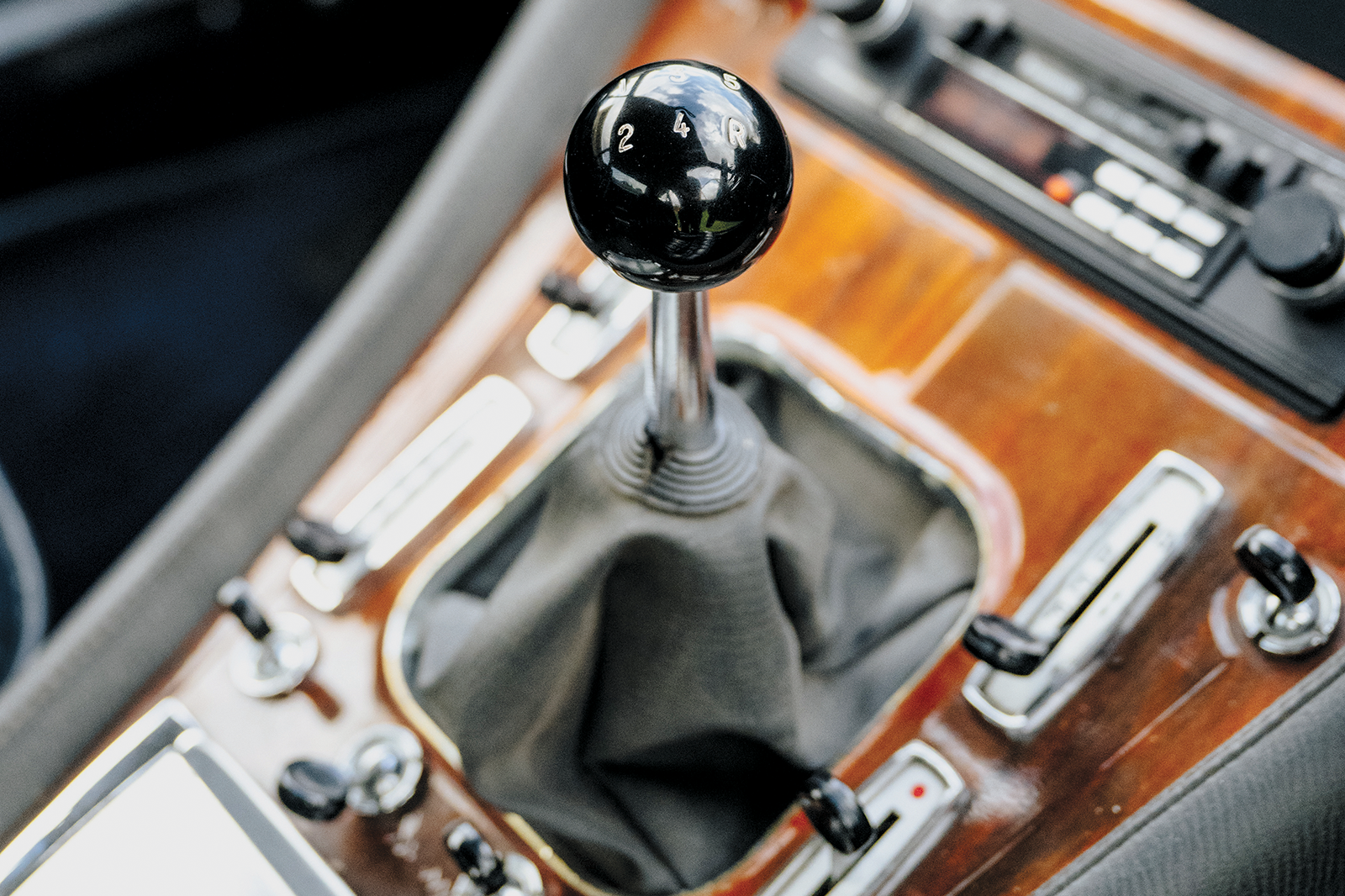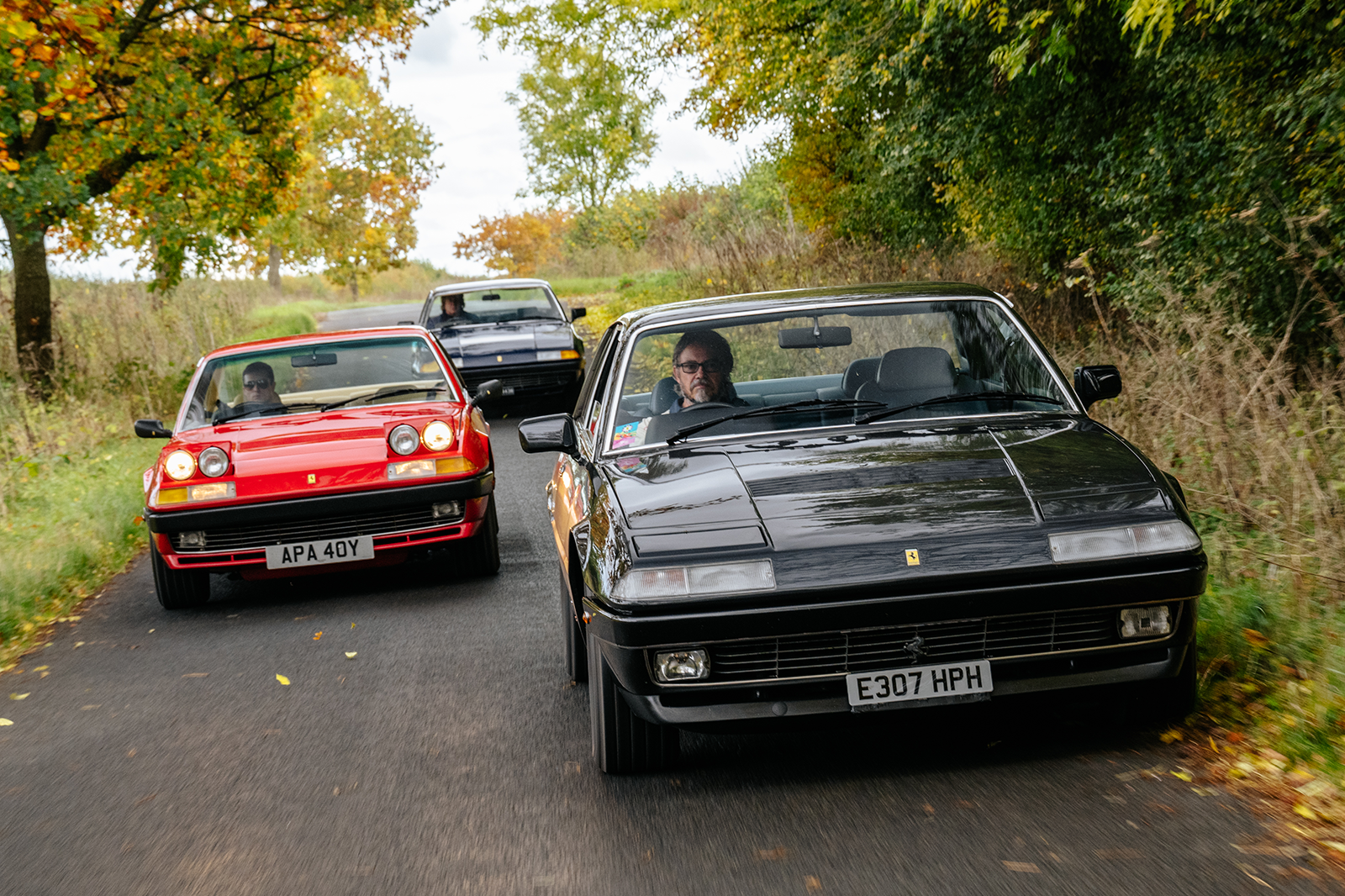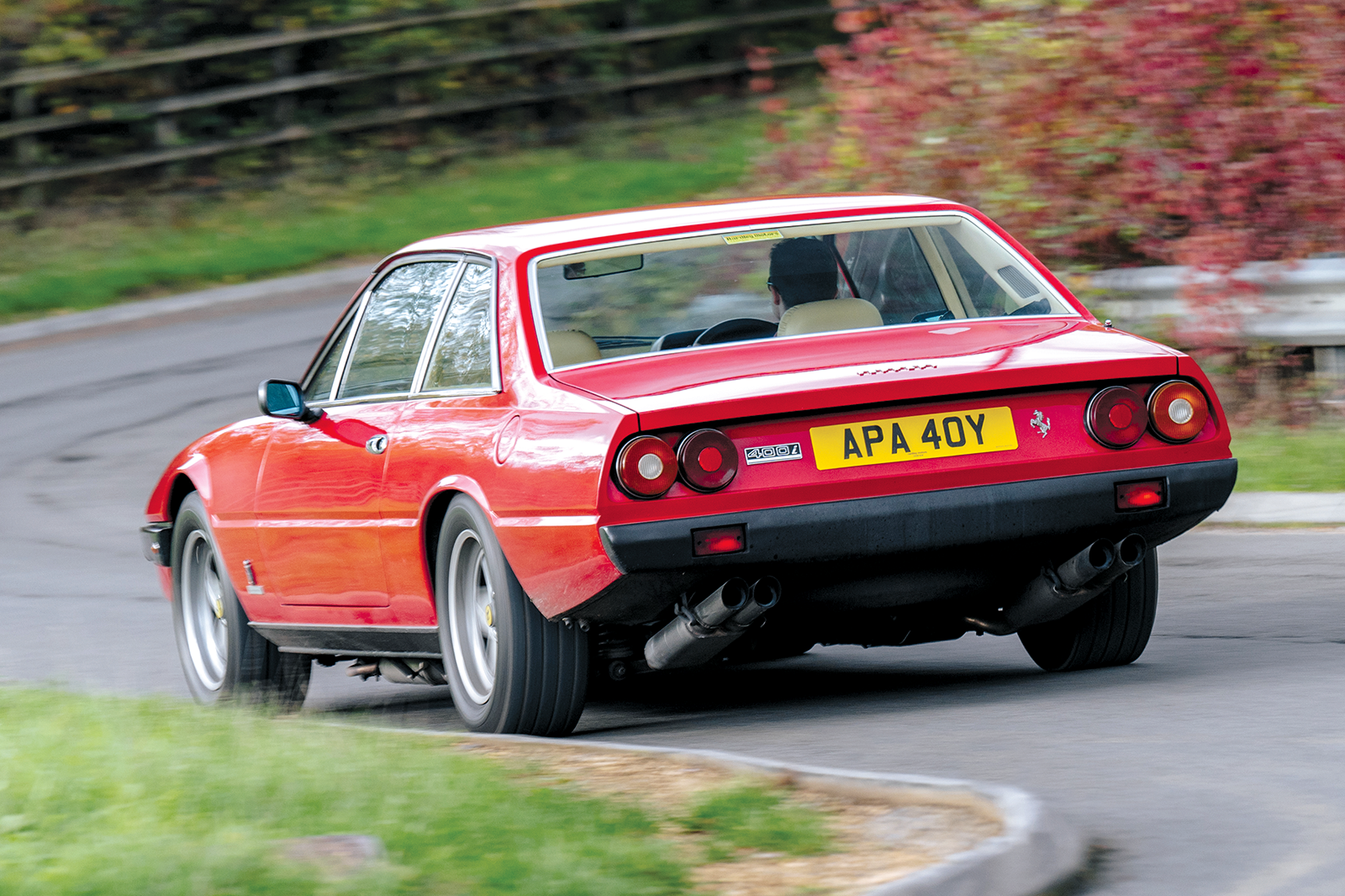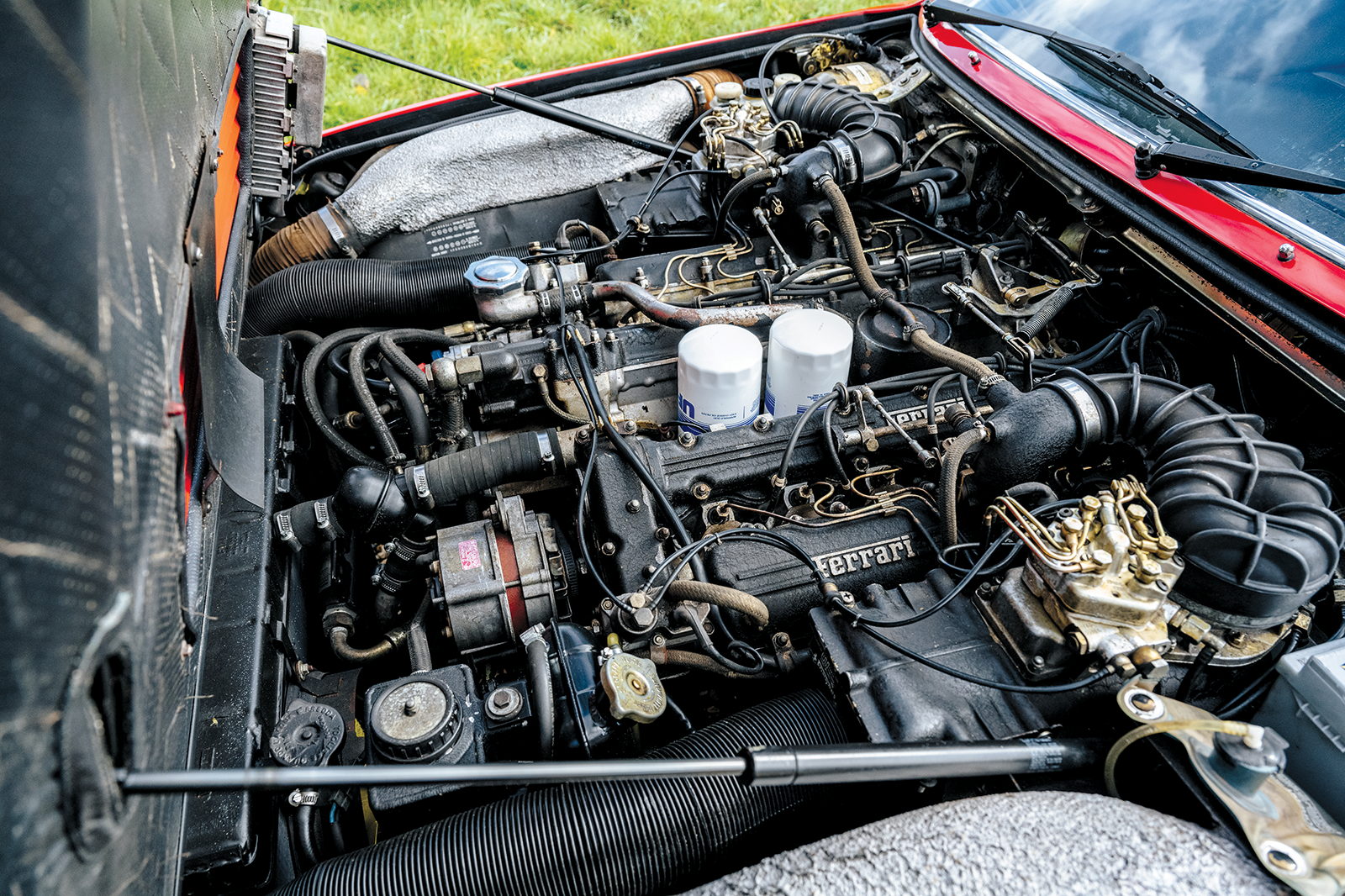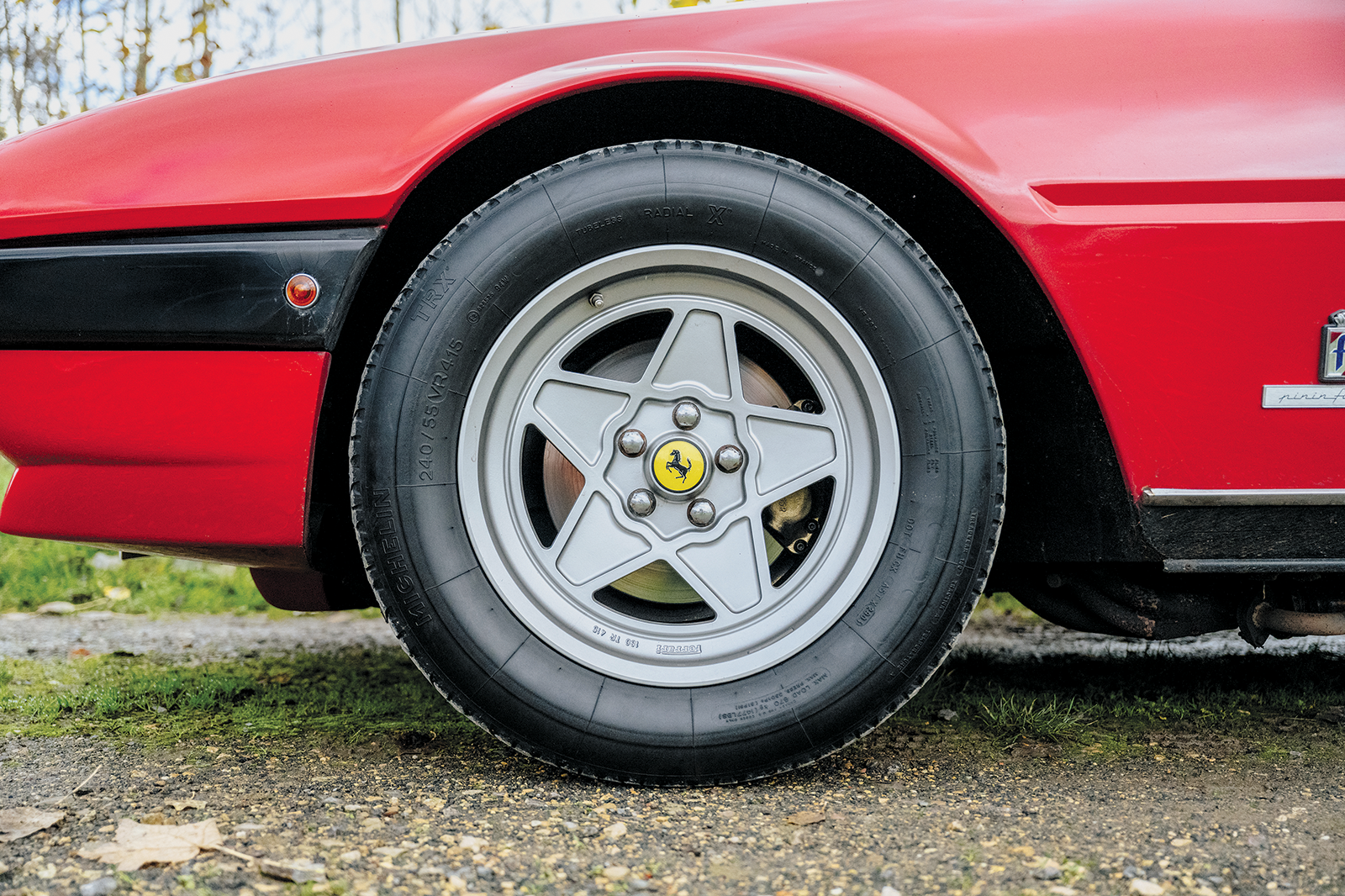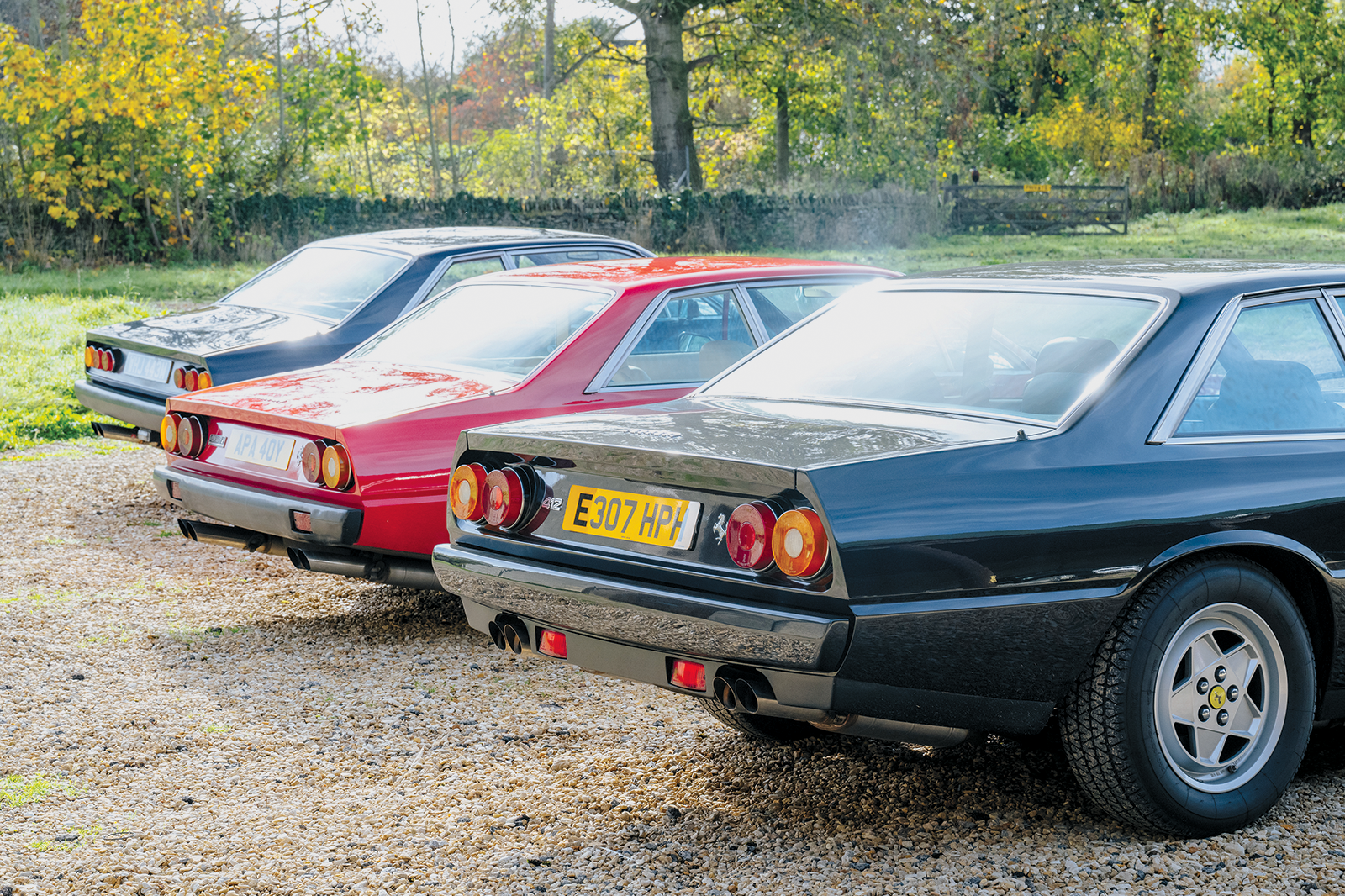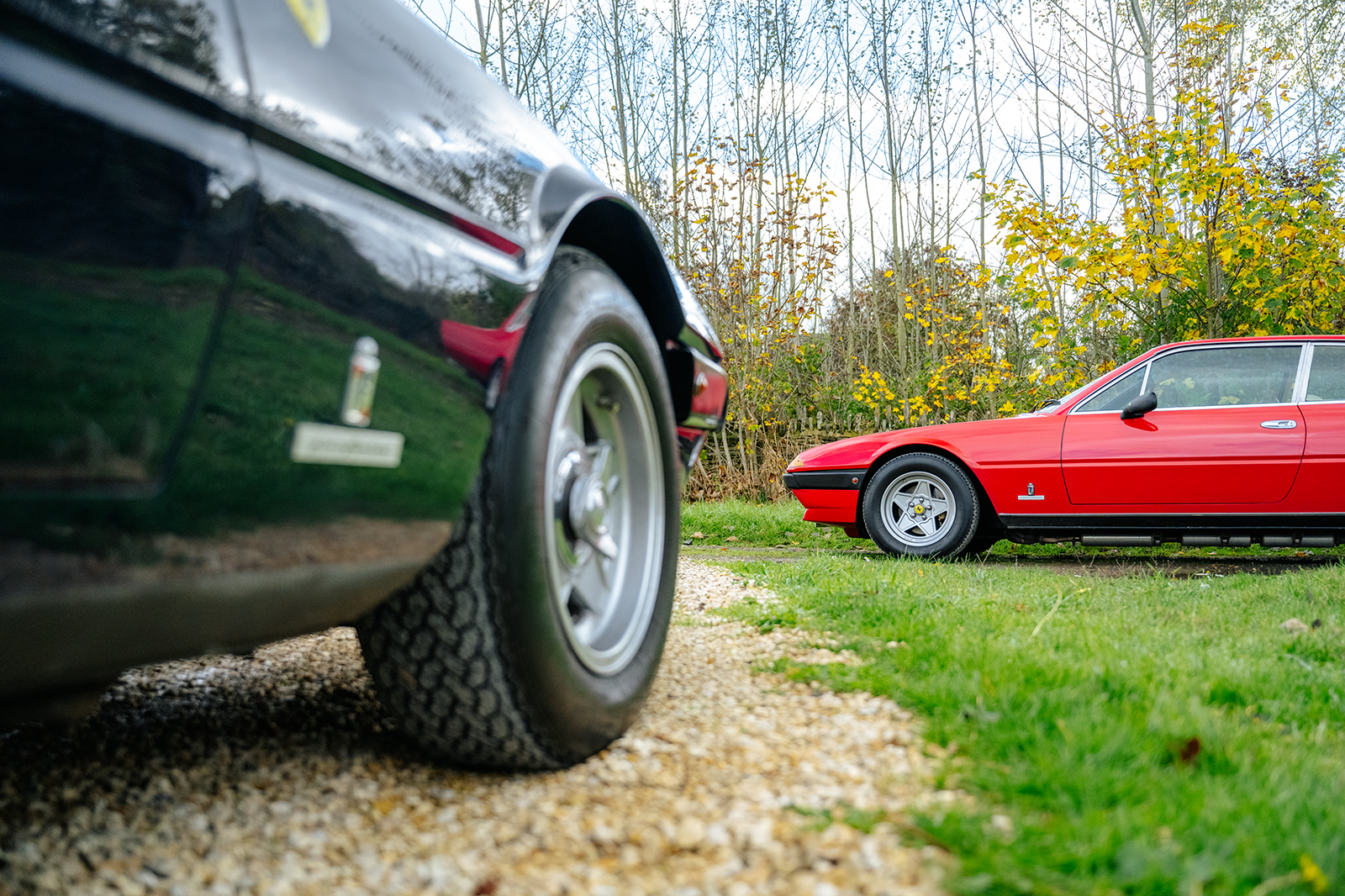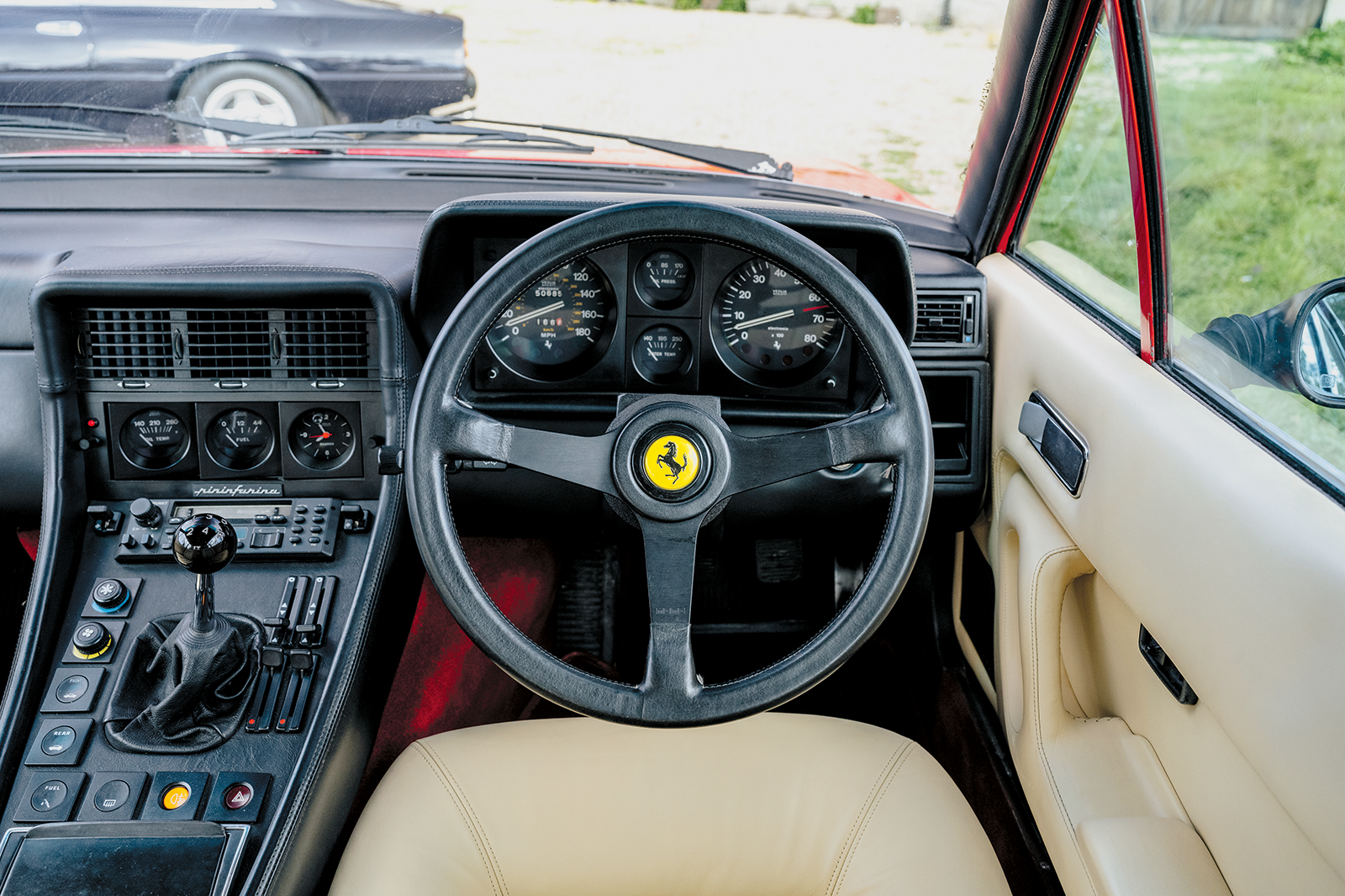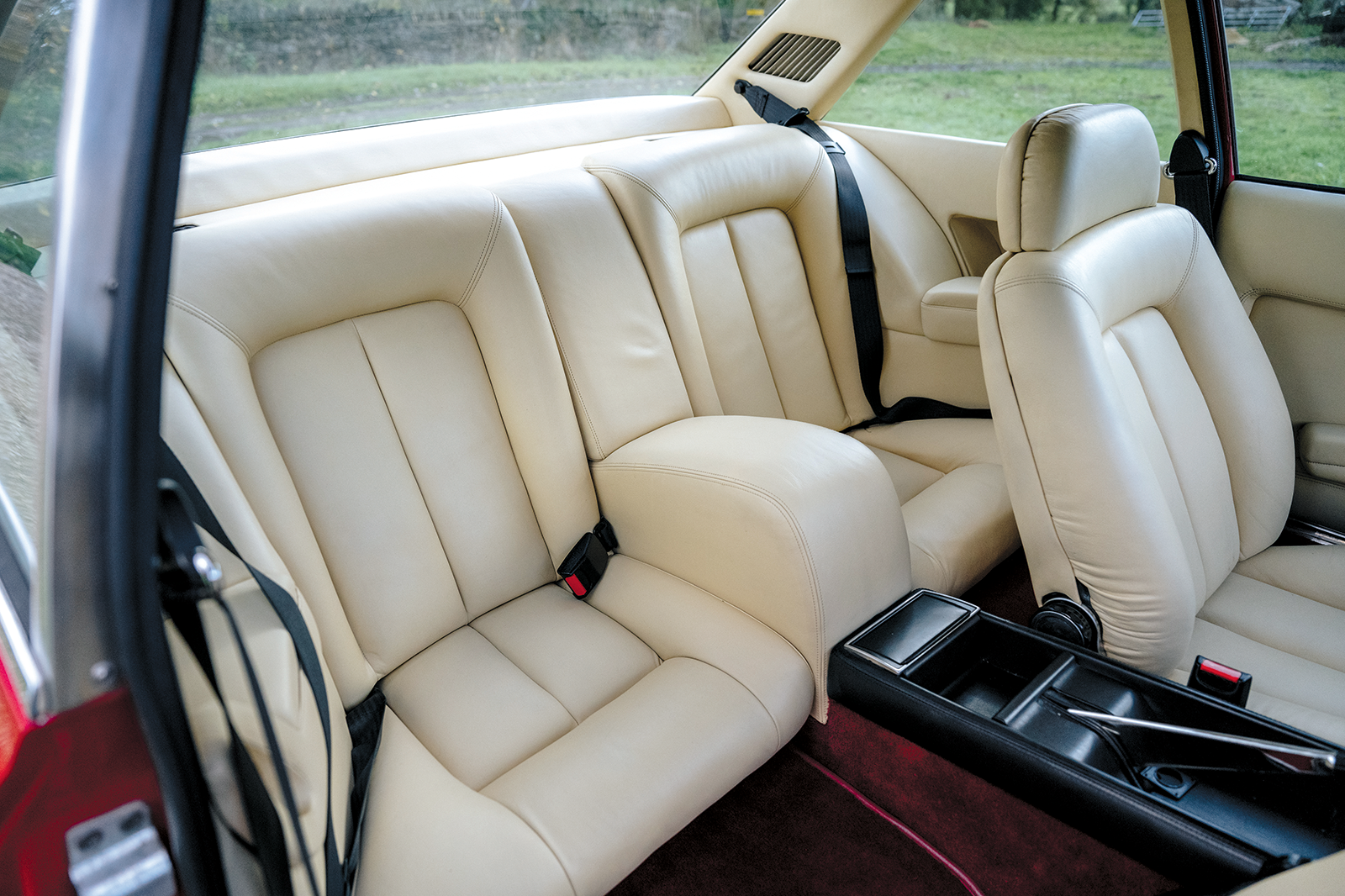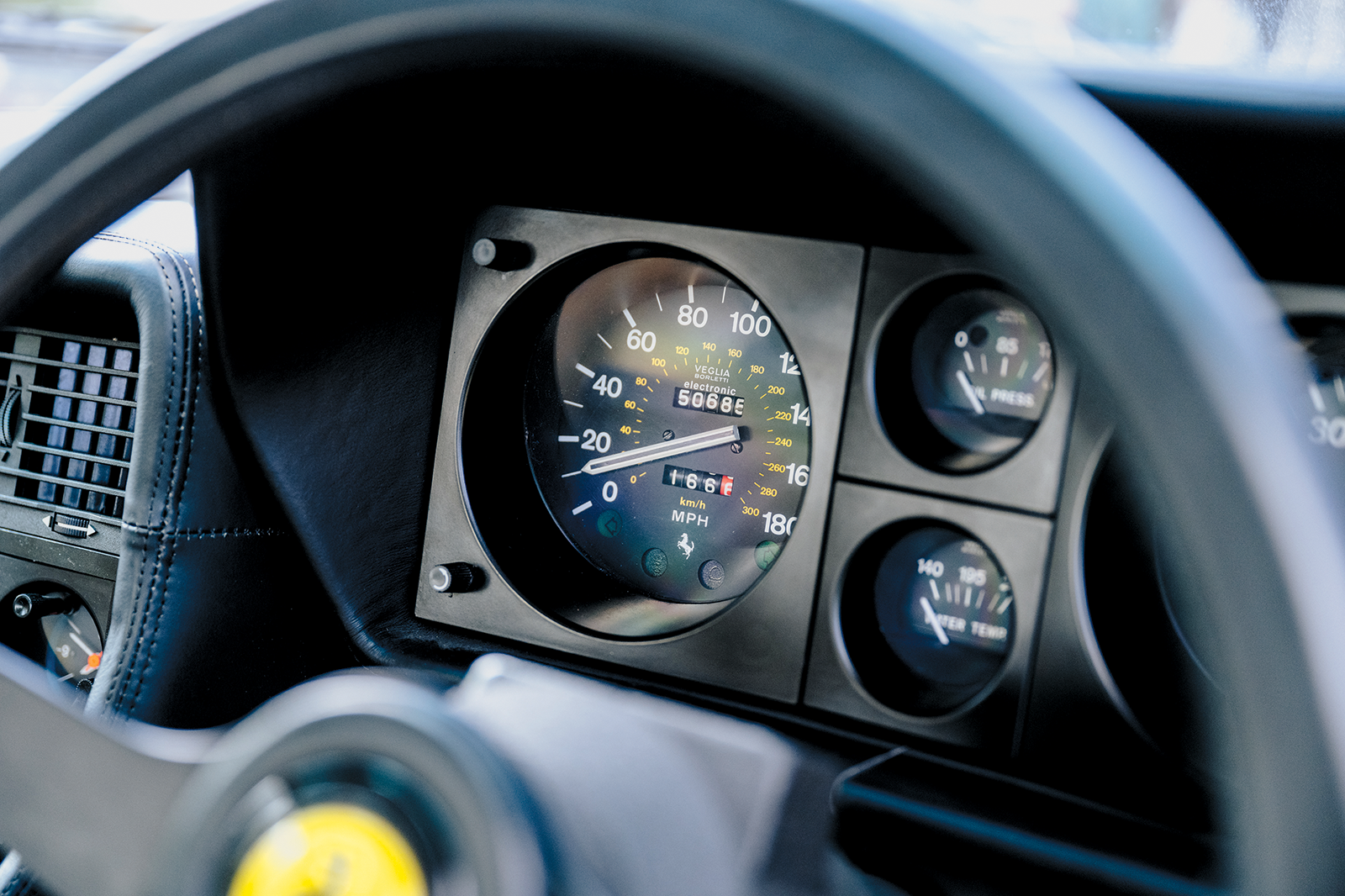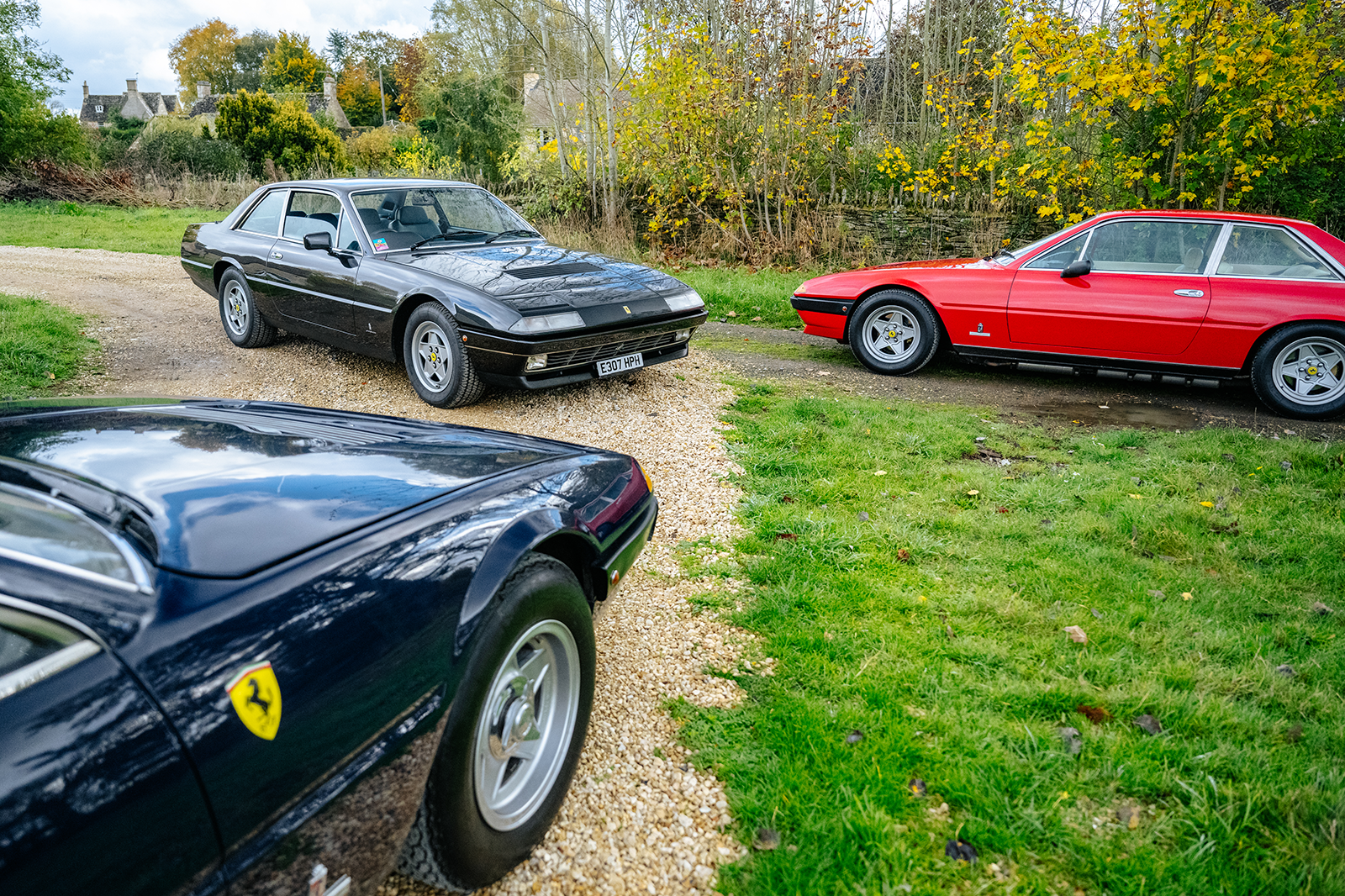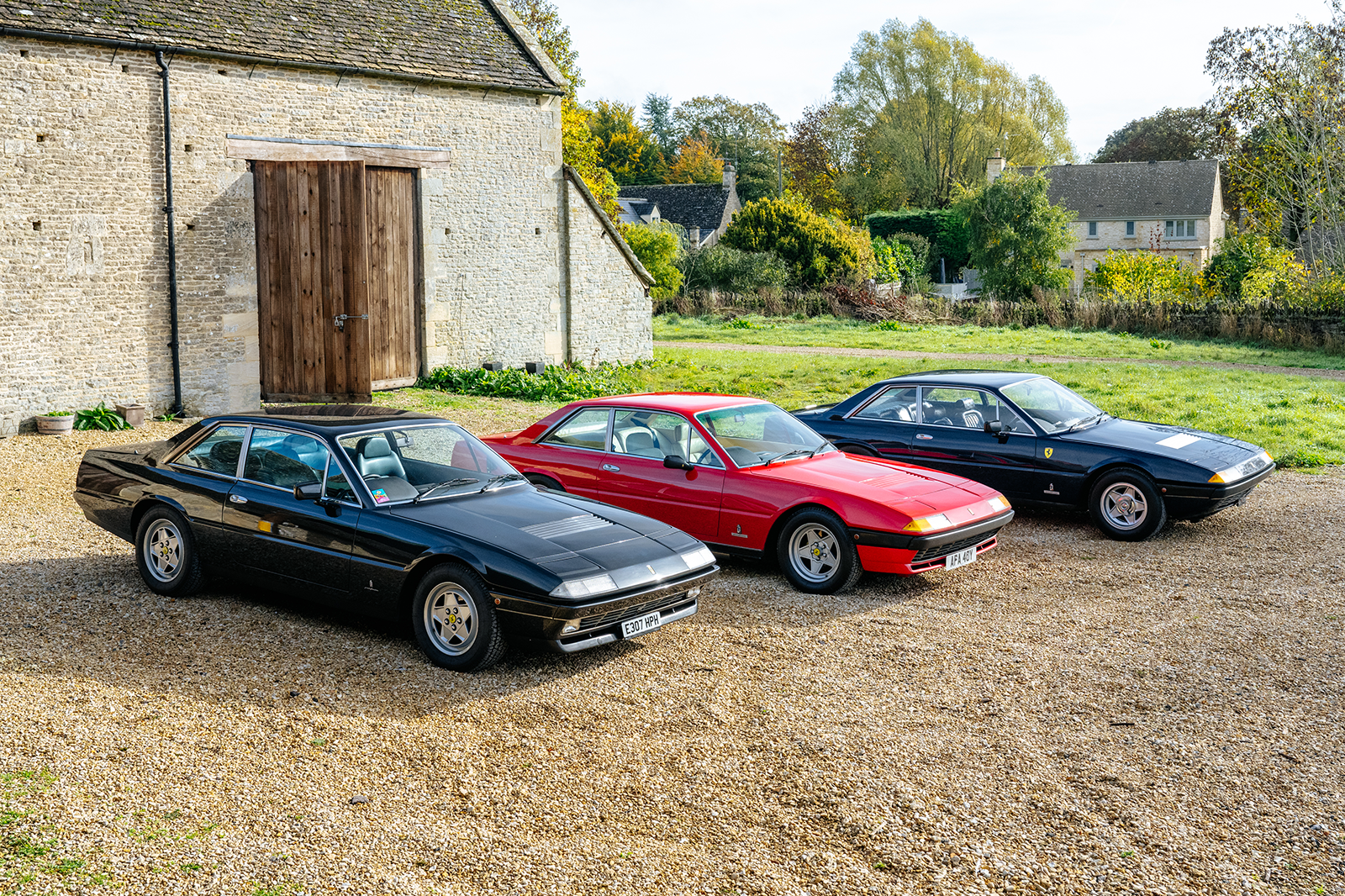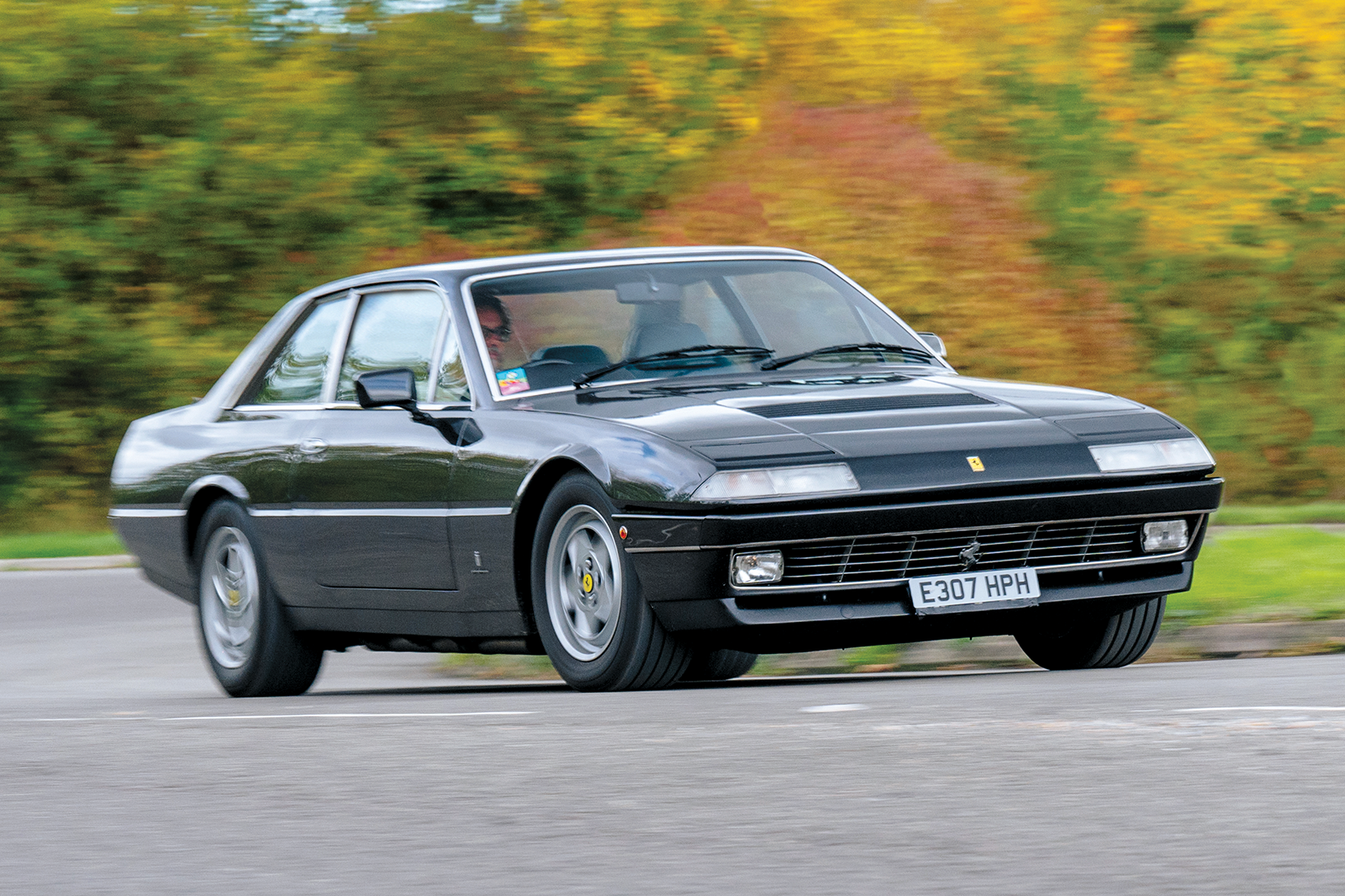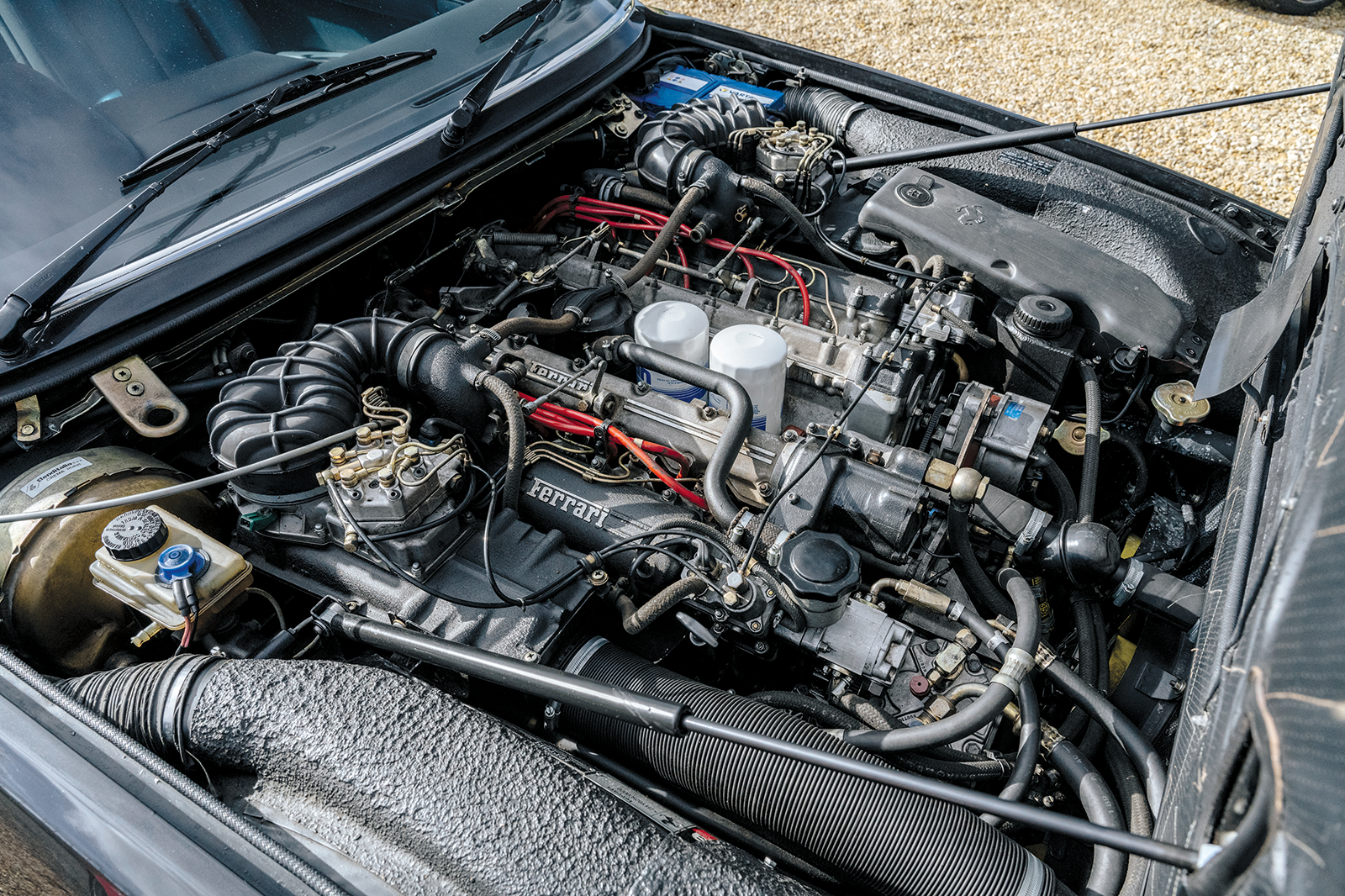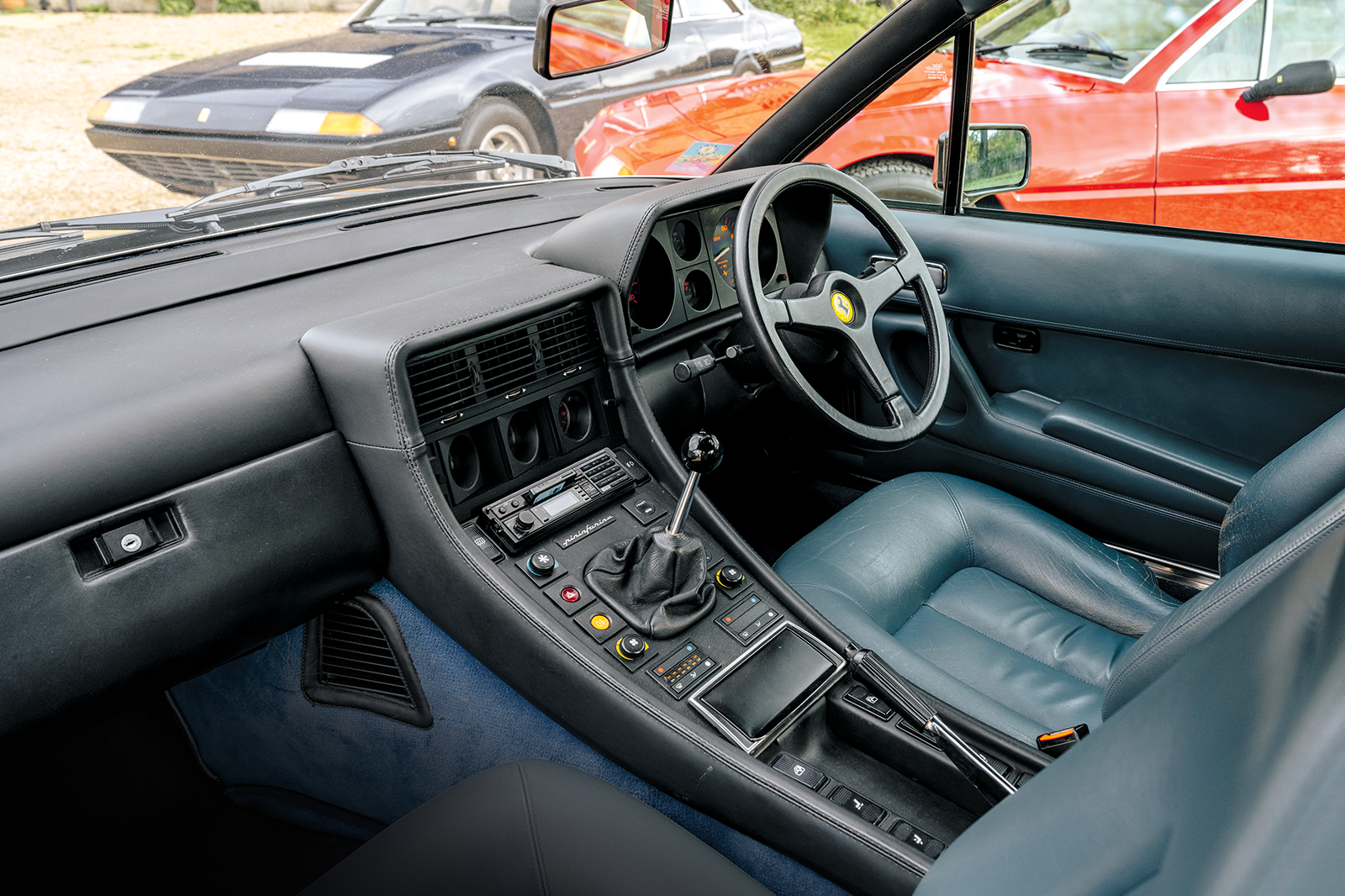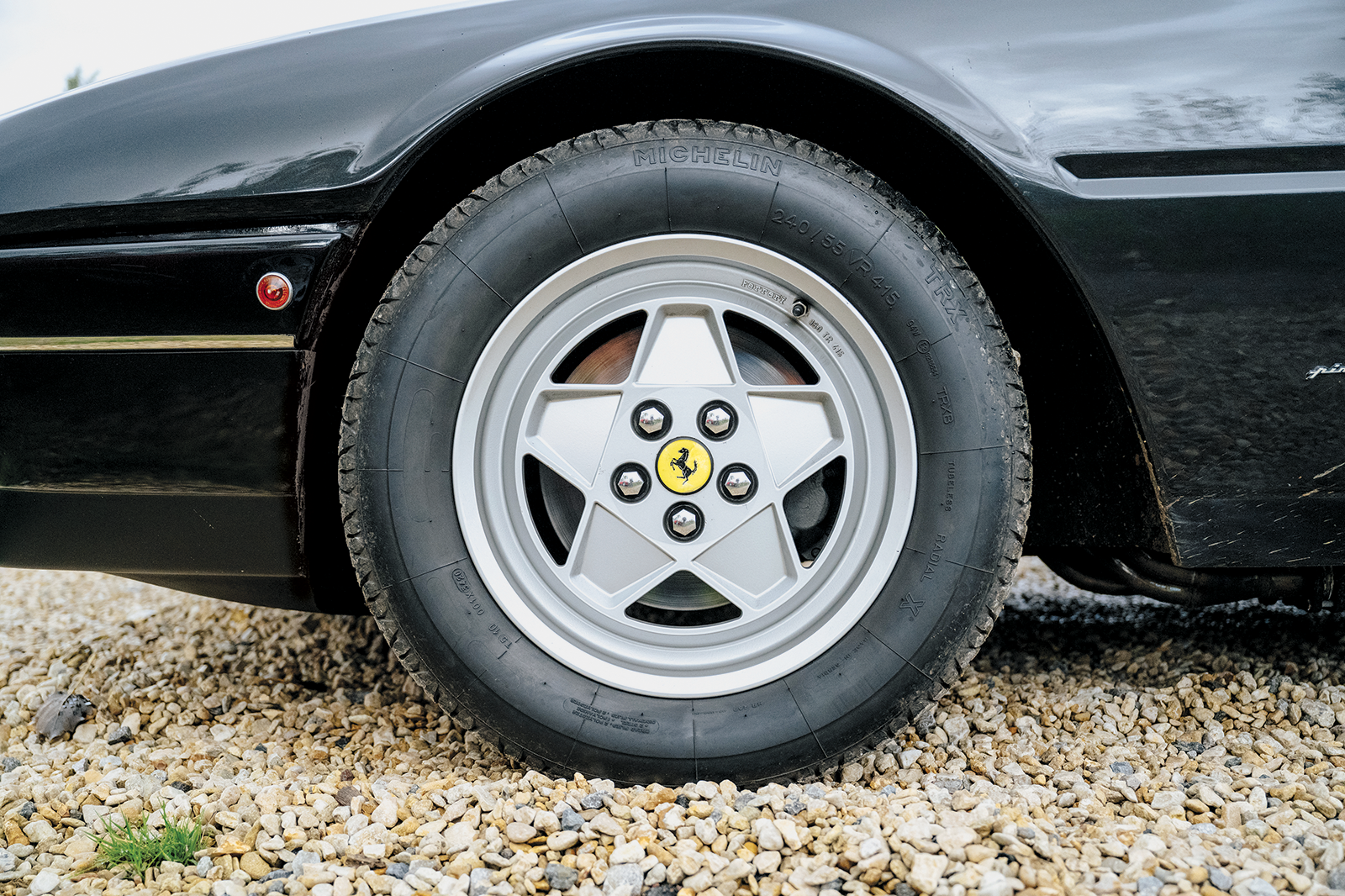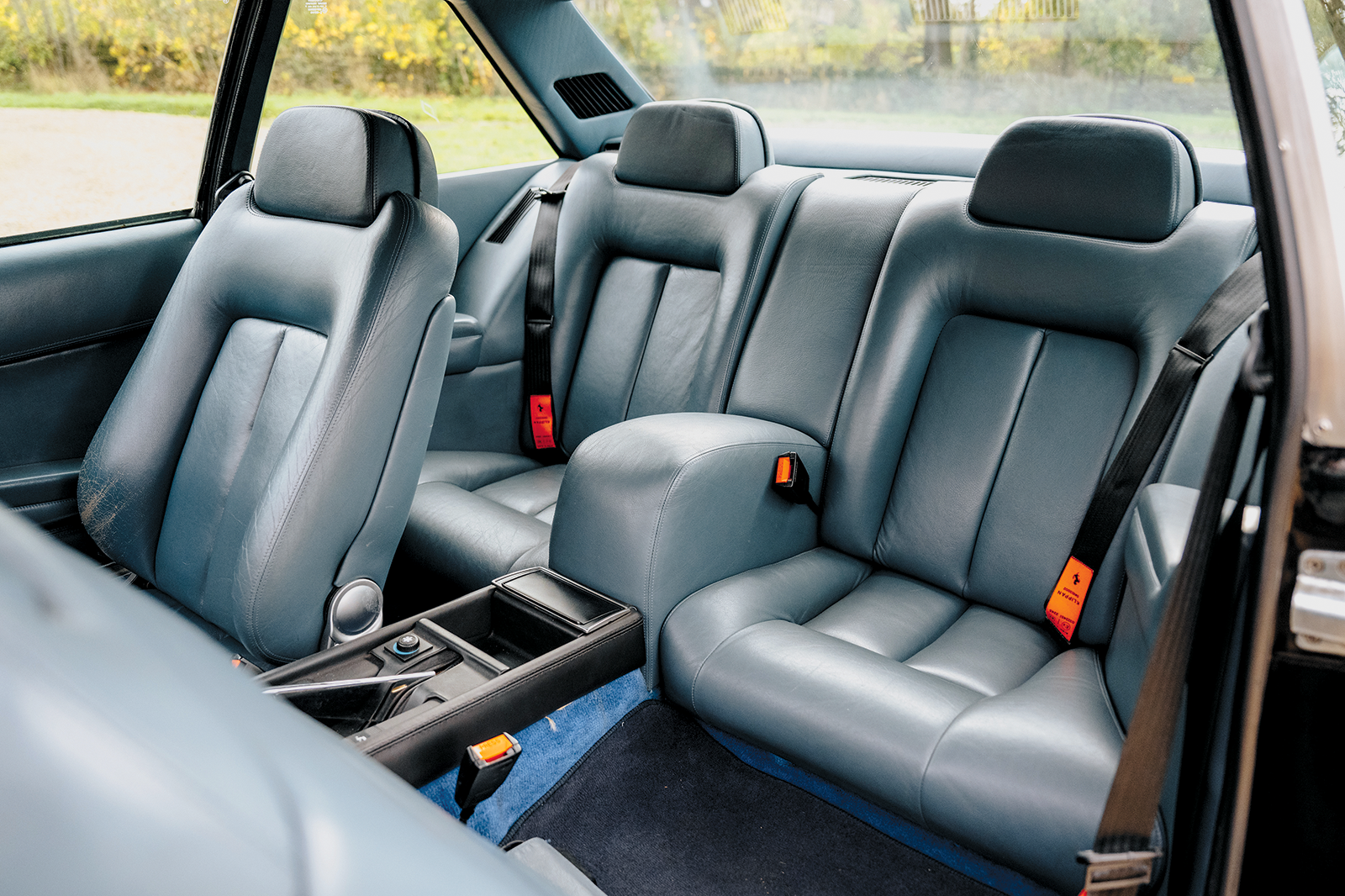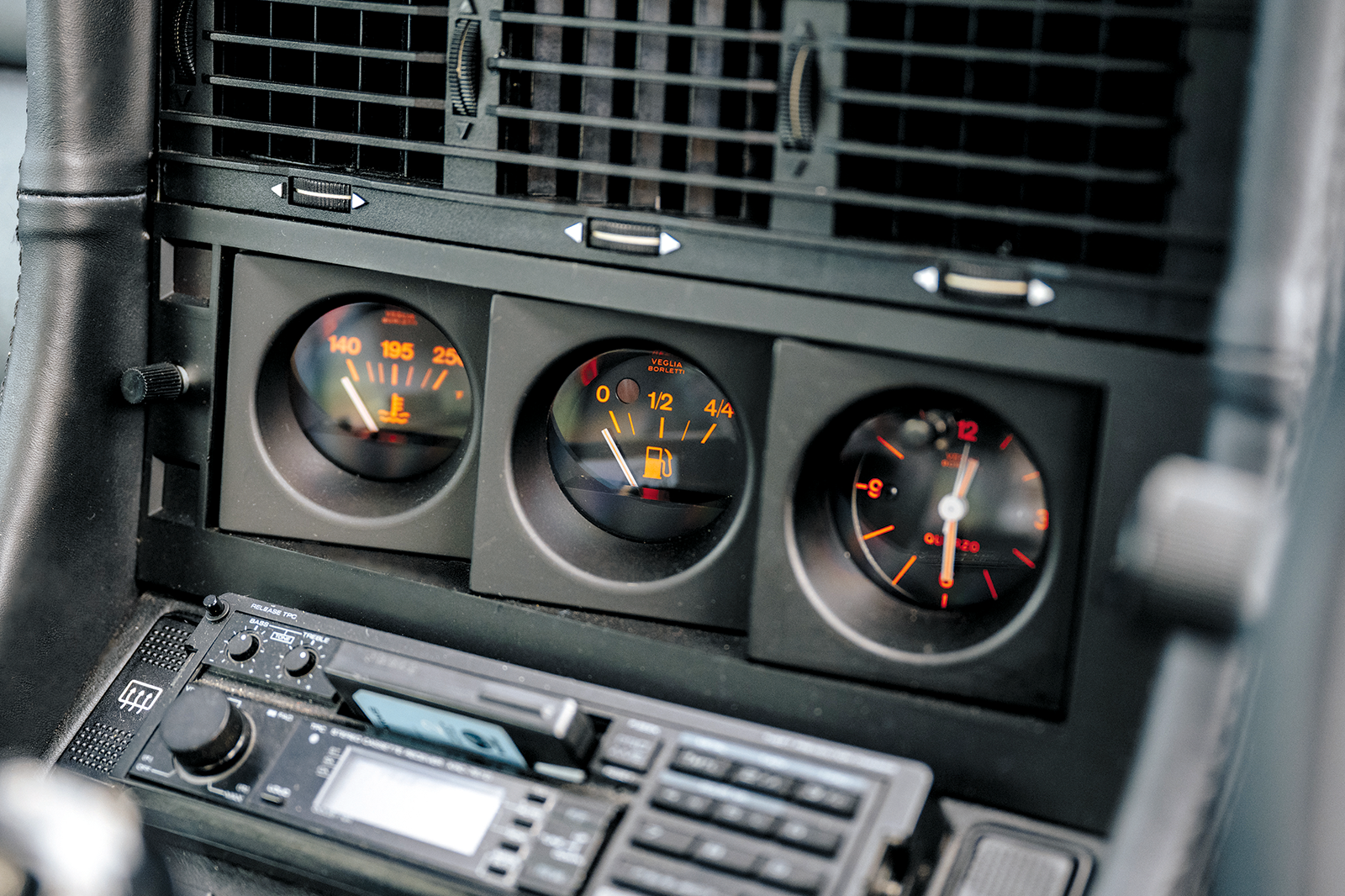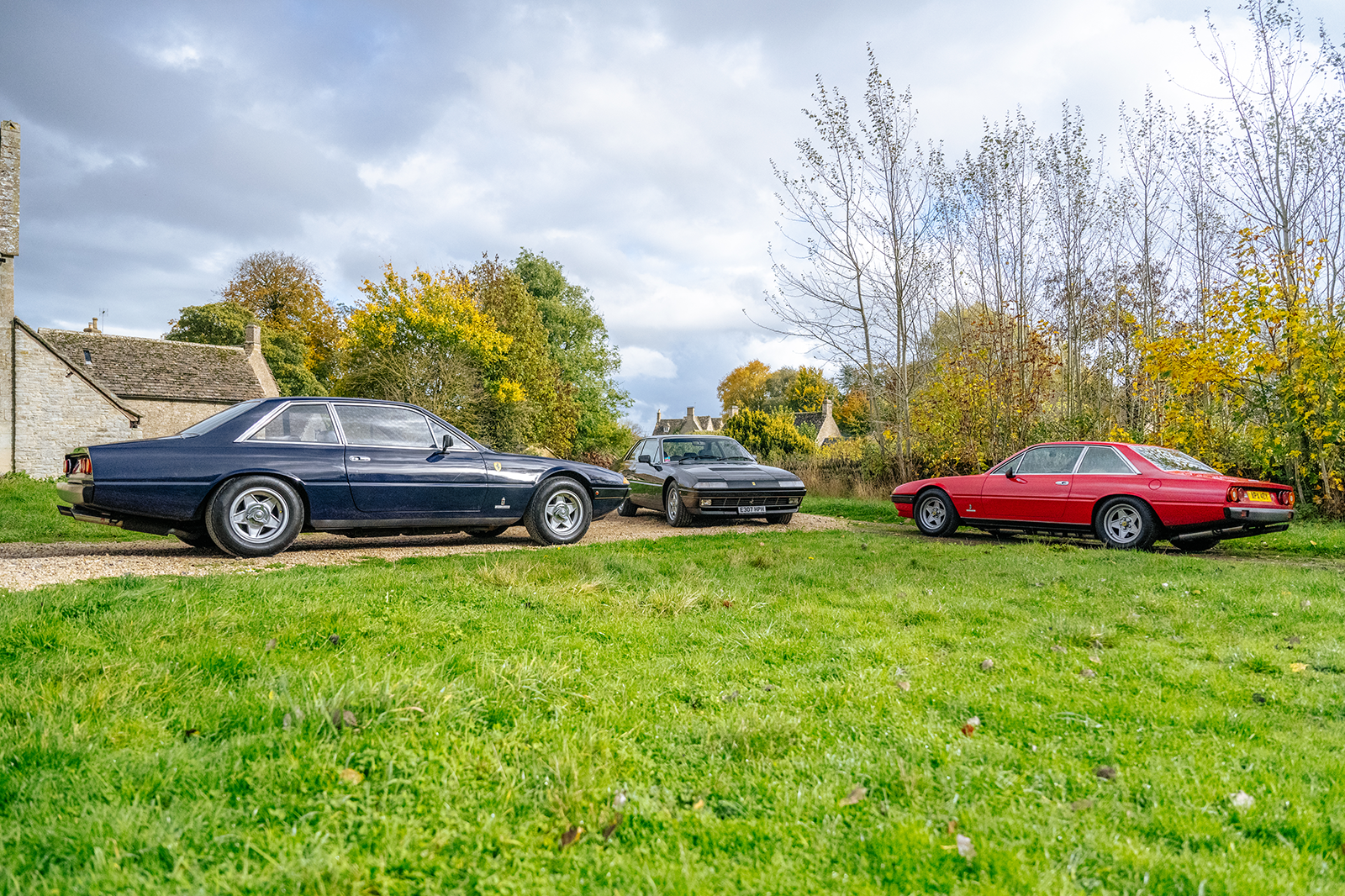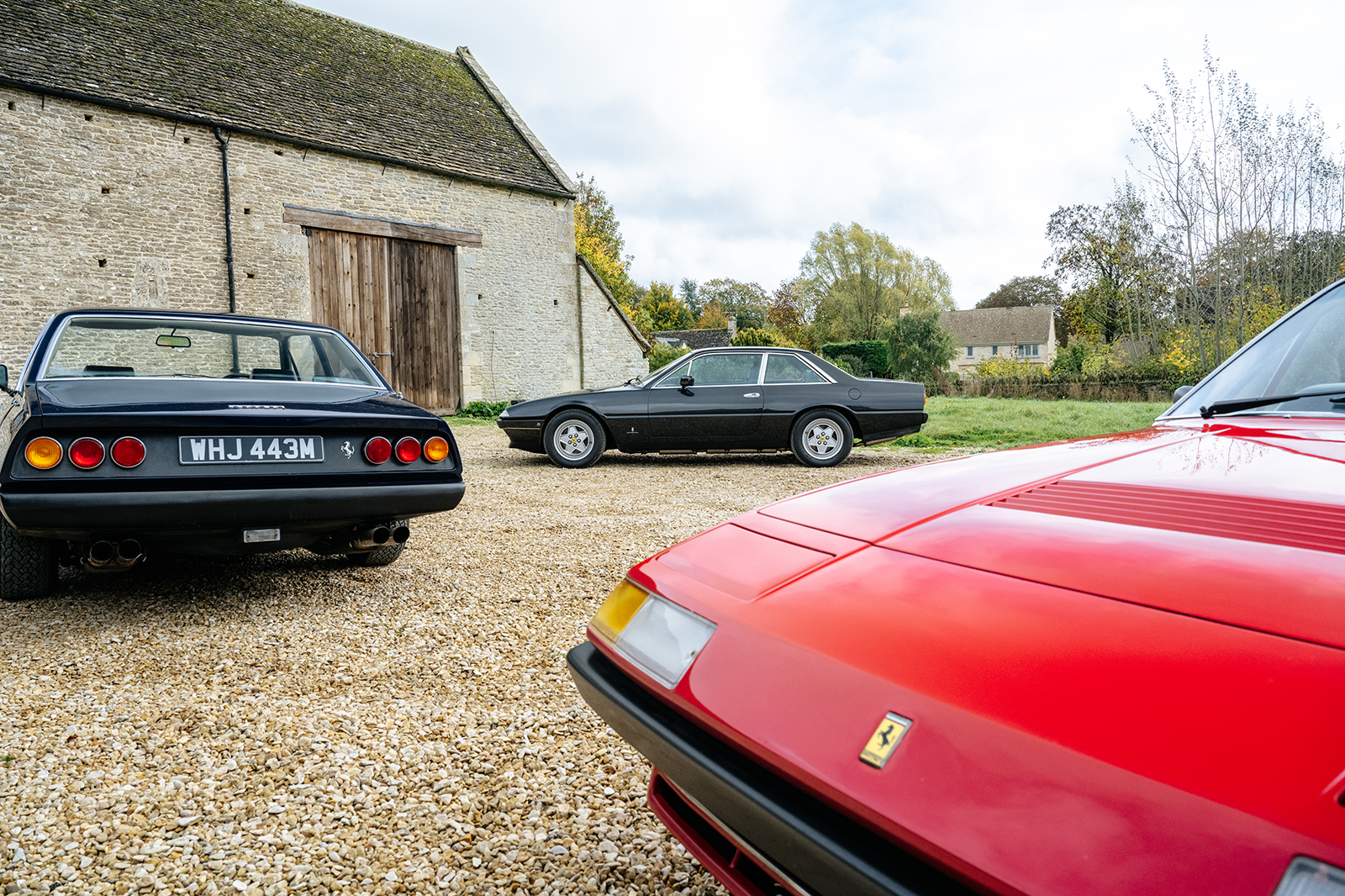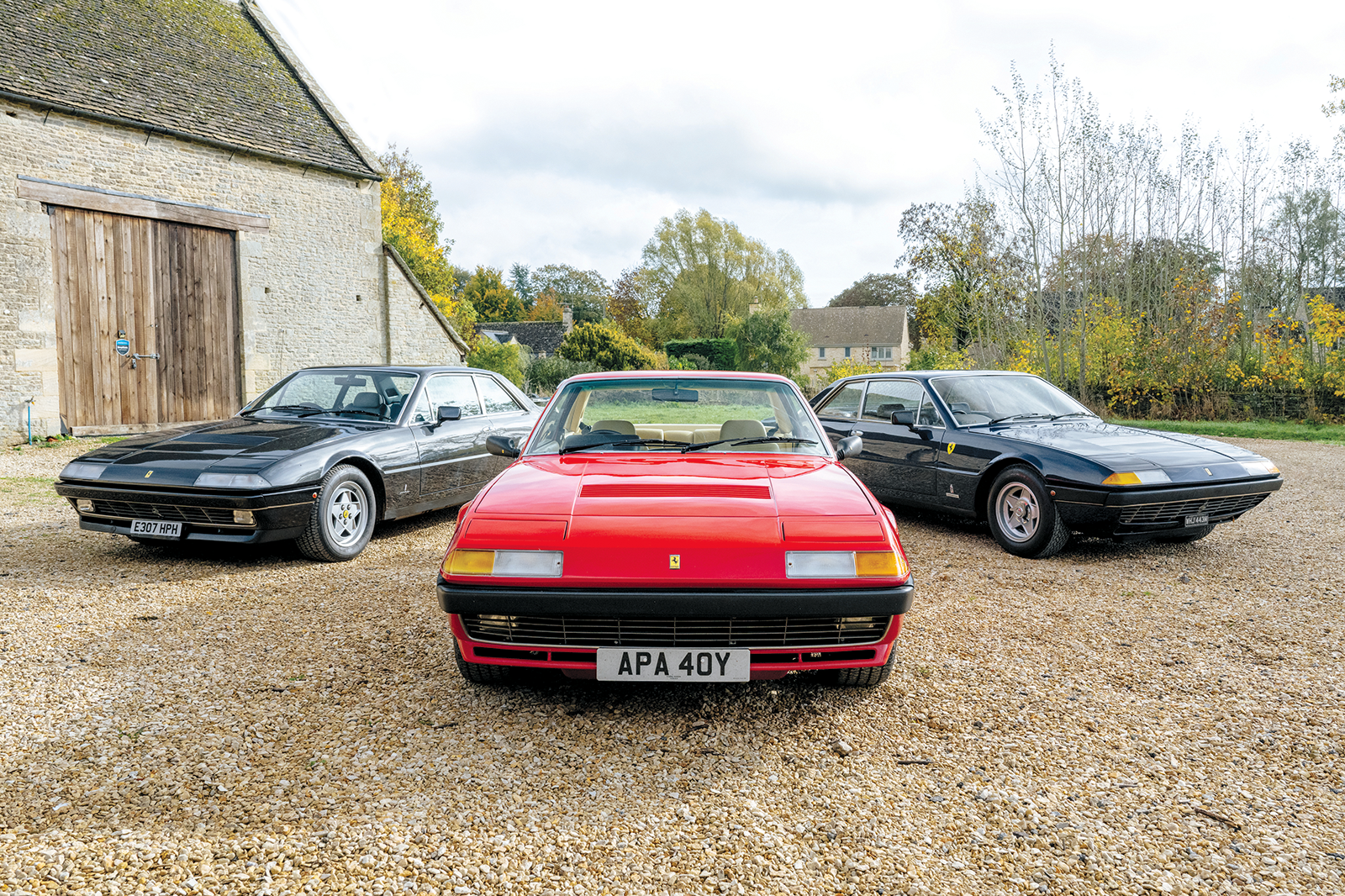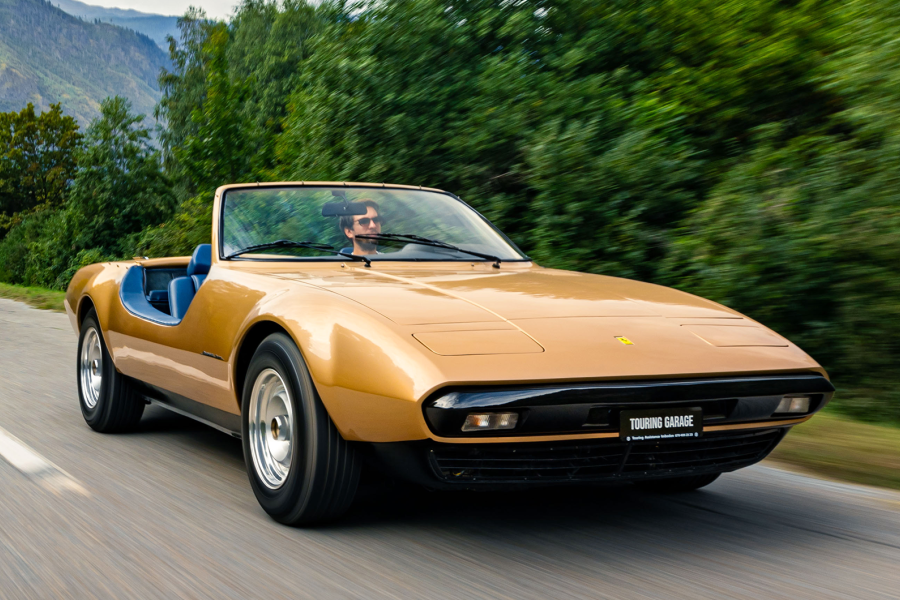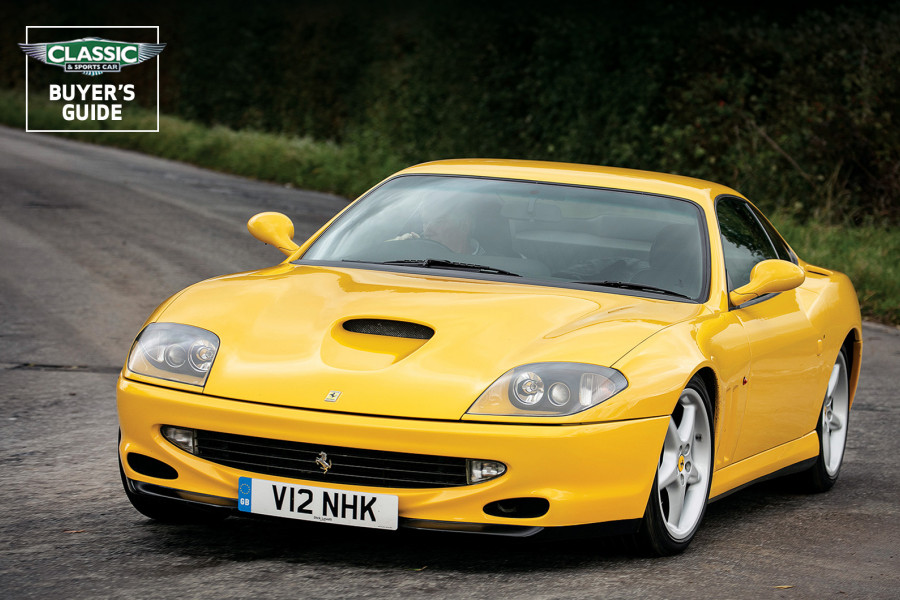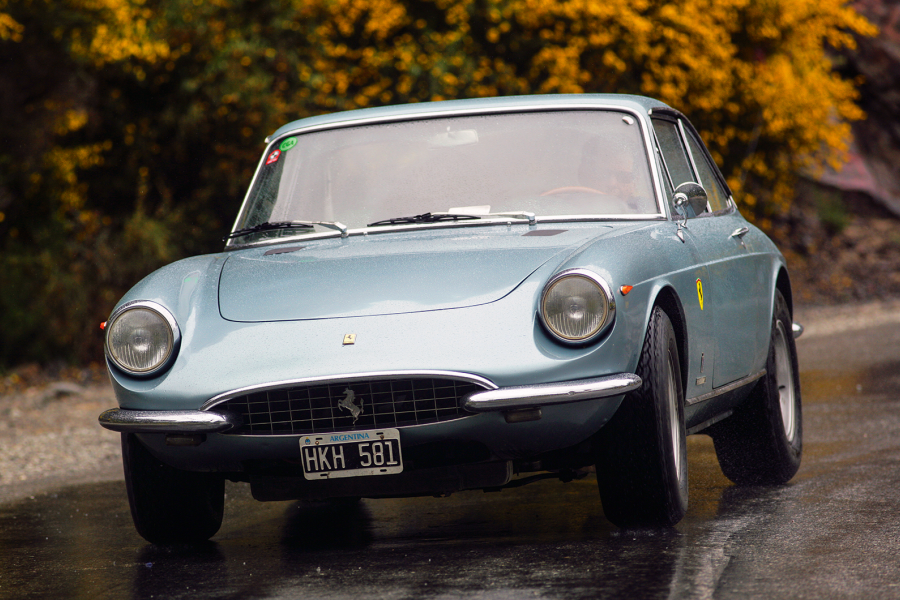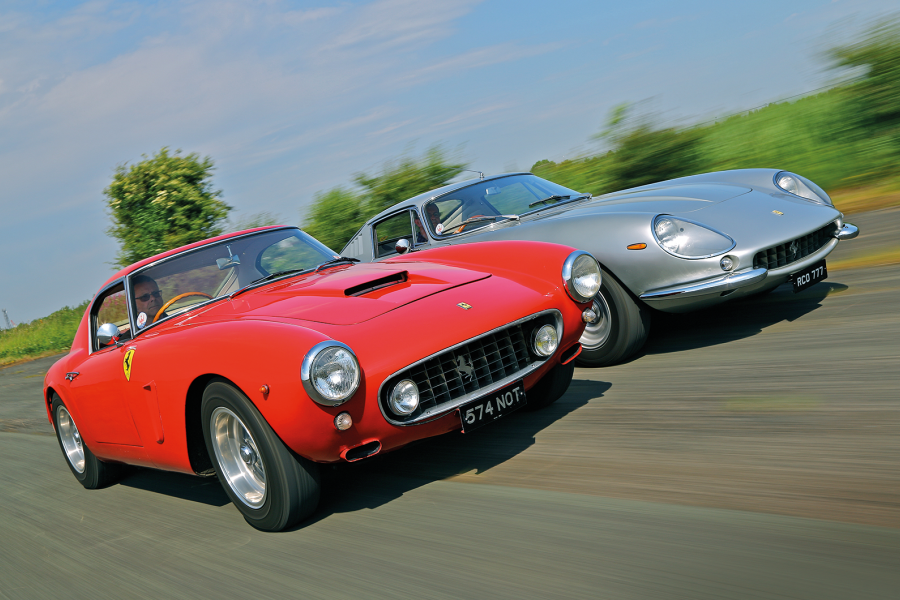Less obvious was the introduction of Bosch ABS and front suspension that had been redesigned for improved stability and a better turning circle.
Priced at £55,599, the first right-hooker 412s hit UK roads in November 1985.
Production figures reveal that buyers preferred two-pedal Ferrari V12 motoring: out of 1796 400s and 400is built between 1976 and ’85, 1210 were autos.
With 412 production split 270 to 306 in favour of the automatic, its sales showed signs of bucking that earlier trend.
The driving position is short-legged/arms-out in this classic Ferrari 400GTi
More than three decades on, the rarity of manual versions of all three cars has tended to skew the survival rates: the three-pedal 400s and 412s survive in disproportionate numbers because they are generally more cherished than the autos and less likely to have been broken for parts.
There was a time, not so long ago, when a Ferrari 400i would have been rendered a ‘breaker’ on almost any pretext from a knackered exhaust to a full ashtray.
Putting the fiscal case – for and against – to one side, I have always thought of these cars as being the first ‘sorted’ Ferraris that owners actually used as real working cars.
A generous glass area gives an airy feel inside
Our three-car line-up is missing a carburettor 400 and an automatic representative, but the fact that both the 400i and 412 are manual GTs rather underlines the point about survival rates.
All the 365s are manual, the other claims to fame of the early car being the centre-lock wheels and Dino-style toggle switches.
Owner Simon Greenwood feels that these features give the 365GT4 2+2 a link to the earlier generation of front-engined cars that is somewhat missing in the more ‘corporate’ 400 and 412.
The manual 400i tops out at 153mph
The dark-blue 365 is certainly the prettiest of the three, mainly because it doesn’t have a chin spoiler, and its handsome interior is cleaner and more functional.
It is also the best-looking under the bonnet, with six twin-choke Webers in place of a mass of fuel rails and metering units.
The plush 412GT even has a second alternator to help run the electrics.
Yet what strikes me most about the three cars is how similar they are to look at, sit in and drive: a testament to the soundness of the original concept.
In total, the Ferrari 365/400/412 series enjoyed a 17-year production run
They are low-slung by modern standards and really quite compact, with modest frontal areas, steeply raked windscreens and slim rooflines that flow into strong, beautifully resolved tails.
I’m no fan of colour-coded bumpers, but nothing about the 412 is offensive.
In profile it even hides its complex exhaust more effectively than the earlier cars.
Peter Vaughan has owned his manual example for 10 years and done about 18,000 miles in it. “It’s almost always the only one at Ferrari club events,” he says.
‘These substantial four-seaters maintained a tradition of front-engined V12 elegance for sporty tycoons the wrong side of 40’
‘Our’ Rosso Cherry 400i is a Series 2 supplied by independent specialist Mike Wheeler at Rardley Motors and ordered new by a director of Maranello Concessionaires.
Outwardly identifiable by its metric TRX-shod wheels, exposed lower driving lights and high-intensity foglights in its rear bumper, the S2 400i, built from early ’83, also had smart, Ferrari-badged door mirrors, gas (rather than hydraulic) self-levelling suspension struts at the rear and an additional 5bhp teased out by attention to cam profiles and exhaust manifolds.
Entering through long doors – noting the Alfa Spider exterior handle – there is plenty of glass and lots of leather.
The Ferrari 412 got Bosch ABS and redesigned front suspension
But the 365 has more of a show-car feel, with the Alcantara-covered dash (with vents on the top) and the four boxy minor instruments angled towards the driver.
There’s no getting away from the short-legs/arms-stretched driving position and the acute angle of a chunky Momo steering wheel that encourages two-handed control at all times, shuffling between four turns from lock to lock for a supertanker turning circle.
The ski-slope centre consoles bear testimony to how far back the designers had to mount the V12 for weight distribution, while the cosy rear quarters are close-coupled but carefully contoured.
The V12 engine grew to 4943cc in the 412, with power climbing up to 340bhp
In all cases they are well-appointed, with armrests and cubbyholes: if you really had to be driven by somebody else at 150mph, they look as good a place as any to have a nervous breakdown.
The high-pitched whine of the starter motor blends into the smooth firing impulses of 12 pistons coming to life with the silky burble of a 900rpm tickover.
Sensors and enrichment devices in the injected cars tidy up the cold-running characteristics, but early throttle inputs need to be carefully measured in the 365GT4 before it runs cleanly.
The Ferrari 412’s protruding centre console betrays its forward gearbox placing
There is something deliciously satisfying even in the act of driving slowly in these big Ferraris.
The long, smooth and accurate throttle action is matched in effort by clutch, steering and gearchange inputs that have an appropriate – but not unreasonable – heft.
Like most of the front-gearbox V12s, these cars have a leather gaiter around their gearlevers rather than an open gate.
A longish movement is common to all, with a pleasingly mechanical action.
An updated wheel design for the Ferrari 412
It’s not the fastest change, but the ideally spaced ratios allow you to fully exploit 7000rpm-worth of silken potential in every phase of its delivery, for the sort of smoothly deliberate progress that makes pressing on a natural activity filled with satisfaction.
There is no denying that the sound the early carburettor car makes is more rewarding, the rush of air through a dozen chokes merging with spooling cams and singing chains to a rev-limited crescendo that gives 50mph in first, almost 80mph in second and well over 100mph in third, all delivered not in a series of lunges but an irrepressible rush of velvet muscle.
All three are massively stable in a straight line and will carry plenty of speed through long, fast curves without roll or drama – even if their sheer width makes them feel less at home on narrower roads – as the delightfully positive, accurate steering casts off its low-speed sloth.
Comfy rear chairs for the 412
As the speeds rise you would hardly know it was assisted, and in all versions the turn-in is accurate enough to place the nose precisely where you want it.
There is less road noise than you might expect and braking is potent, while a well-damped, nicely controlled ride that feels on the harsh side of firm in town seems to smother wrinkles and pockmarks with the effortless touch of a lighter, nimbler car.
If the rowdy 365 sounds faster than the more muted fuel-injected cars, then the 400i and 412 pull every bit as strongly and sweetly, the latter just having the edge in both refinement and flexibility, with a fourth gear that will take you from 20 to 120mph in a single, thrusting surge that seems like something beyond the mere physics of internal combustion.
The dials are canted towards the driver in the Ferrari 412
The 365/400/412 series of four-seat Ferraris represents 17 years of success in a shrinking market for family-sized V12 exotica.
With the demise of four-place rivals from Maserati and Lamborghini, it was a market Ferrari had pretty much to itself by the end of the 1970s.
By outliving their supercoupé rivals and successfully resisting odious comparisons with younger, cheaper machinery from volume prestige brands, these elegant, traditionally engineered cars looked, for a while, as if they might even be Ferrari’s last front-engined V12s.
Thanks to their rear seats, values for the Ferrari 365GT4 2+2 (left), 400i (right) and 412 are lower than their two-seat stablemates
In fact, Maranello made a wholesale return to this configuration, but it never again made cars in the mould of these heavyweight grand tourers.
Operating on the basis that there was a market for no more than 500 four-seaters annually, these were the last boutique V12 products of an Italian supercar industry that still put a high value on exclusivity and hand-finished, coachbuilt individuality.
Today they are more coveted but still tainted by the curse of their rear seats, which means the difference in values between a 365/400/412 family and any of the two-seaters that shared their V12 technology remains as vast as ever.
Ferrari’s front-engined V12 four-seaters are still great to drive
The trouble is, when the cost of upkeep and restoration is on a par with a seven-figure two-seater, it tends to hurt when the values are so disparate.
That, in itself, depresses prices.
But if you believe that everybody should own a V12 Ferrari at least once in their lifetime, then the 365/400/412 series still looks like the only reasonable way to achieve that dream on an even vaguely real-world budget.
Images: Jayson Fong
Thanks to: Rardley Motors; Ferrari Owners’ Club of Great Britain
Factfiles
Ferrari 365GT4 2+2
- Sold/number built 1972-’76/524
- Construction tubular steel chassis, glassfibre floorpan and steel body with aluminium bonnet/boot skins
- Engine all-alloy, dohc-per-bank 4390cc V12, six Weber 38DCOE carburettors
- Max power 325bhp @ 6200rpm
- Max torque 319lb ft @ 4600rpm
- Transmission five-speed manual, RWD via a limited-slip differential
- Suspension independent, by double wishbones, coil springs, anti-roll bar f/r; front telescopic dampers, rear oleo-pneumatic self-levelling struts
- Steering power-assisted worm and roller
- Brakes vented discs, with servo
- Length 15ft 9in (4801mm)
- Width 5ft 11in (1803mm)
- Height 4ft 4in (1321mm)
- Wheelbase 8ft 10in (2692mm)
- Weight 3307lb (1500kg)
- 0-60mph 6.6 secs
- Top speed 152mph
- Mpg 11
- Price new £14,266 (1975)
- Price now £50-90,000*
Ferrari 400/400i
Where different from 365GT4 2+2
- Sold/number built 1976-’85/1796 (inc 1305 400is from 1979)
- Engine 4823cc, Bosch K-Jetronic fuel injection from 1979
- Max power 340bhp @ 6500rpm (400i 310bhp @ 6400rpm)
- Max torque 347lb ft @ 3600rpm (400i 304lb ft @ 4200rpm)
- Transmission optional three-speed automatic
- Weight 4160lb (1887kg)
- 0-60mph 6.7 secs
- Top speed 153mph
- Mpg 12
- Price new £23,999 (1978)
- Price now £35-70,000*
Ferrari 412
Where different from 400i
- Sold/number built 1985-’89/576
- Engine 4943cc
- Max power 340bhp @ 6000rpm
- Max torque 332lb ft @ 4200rpm
- Brakes with ABS
- Weight 3979lb (1500-1805kg)
- Top speed 160mph
- Mpg 15
- Price new £55,599
- Price now £35-80,000*
*Prices correct at date of original publication
Enjoy more of the world’s best classic car content every month when you subscribe to C&SC – get our latest deals here
READ MORE
Practical performance: Lamborghini Espada vs Maserati Indy vs Ferrari 365GT4 2+2
Welcome to the jet set: Ferrari 365GT 2+2 vs Maserati Mexico vs Monteverdi 375L
Future classic: Ferrari Roma
Martin Buckley
Senior Contributor, Classic & Sports Car
